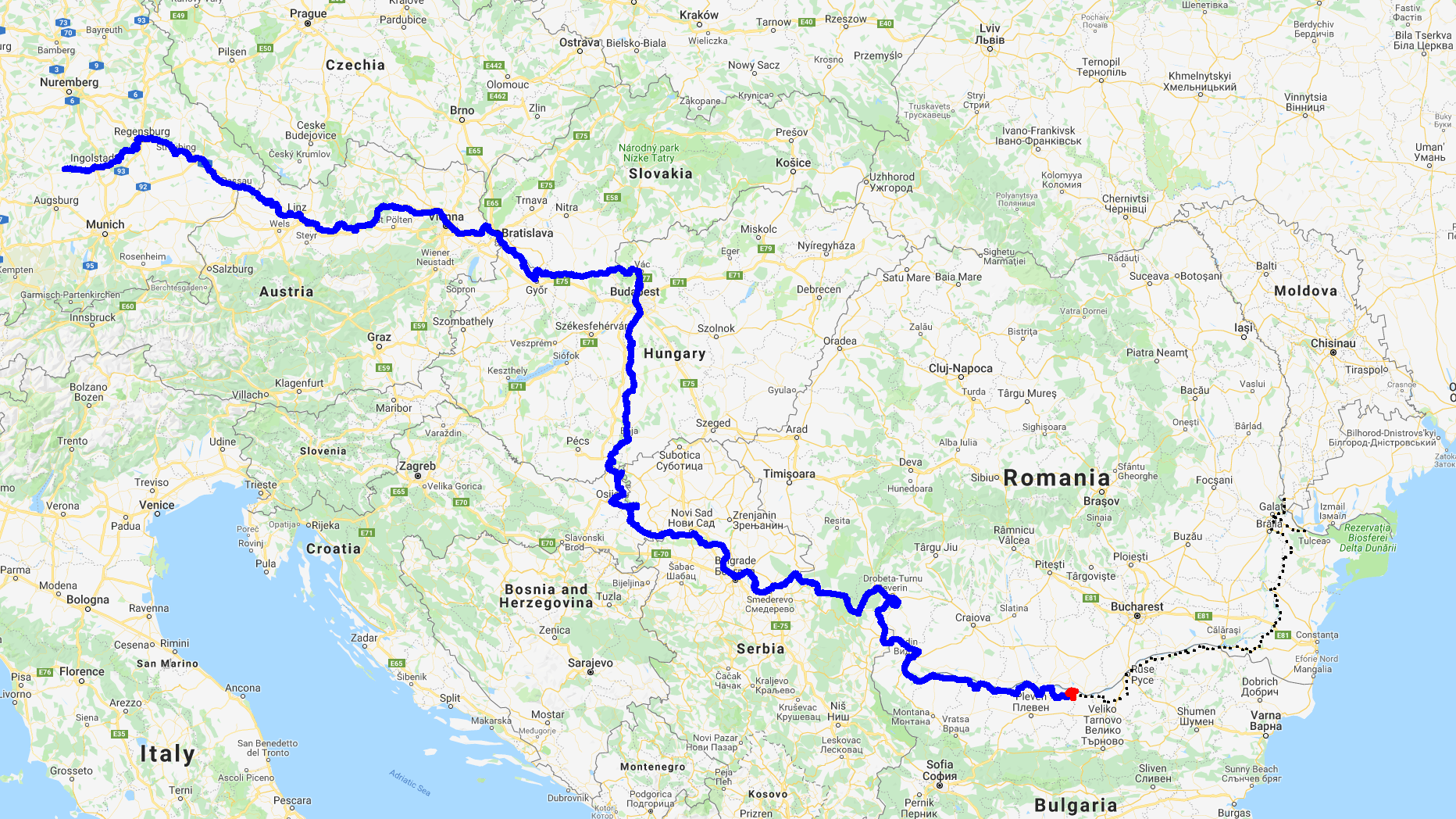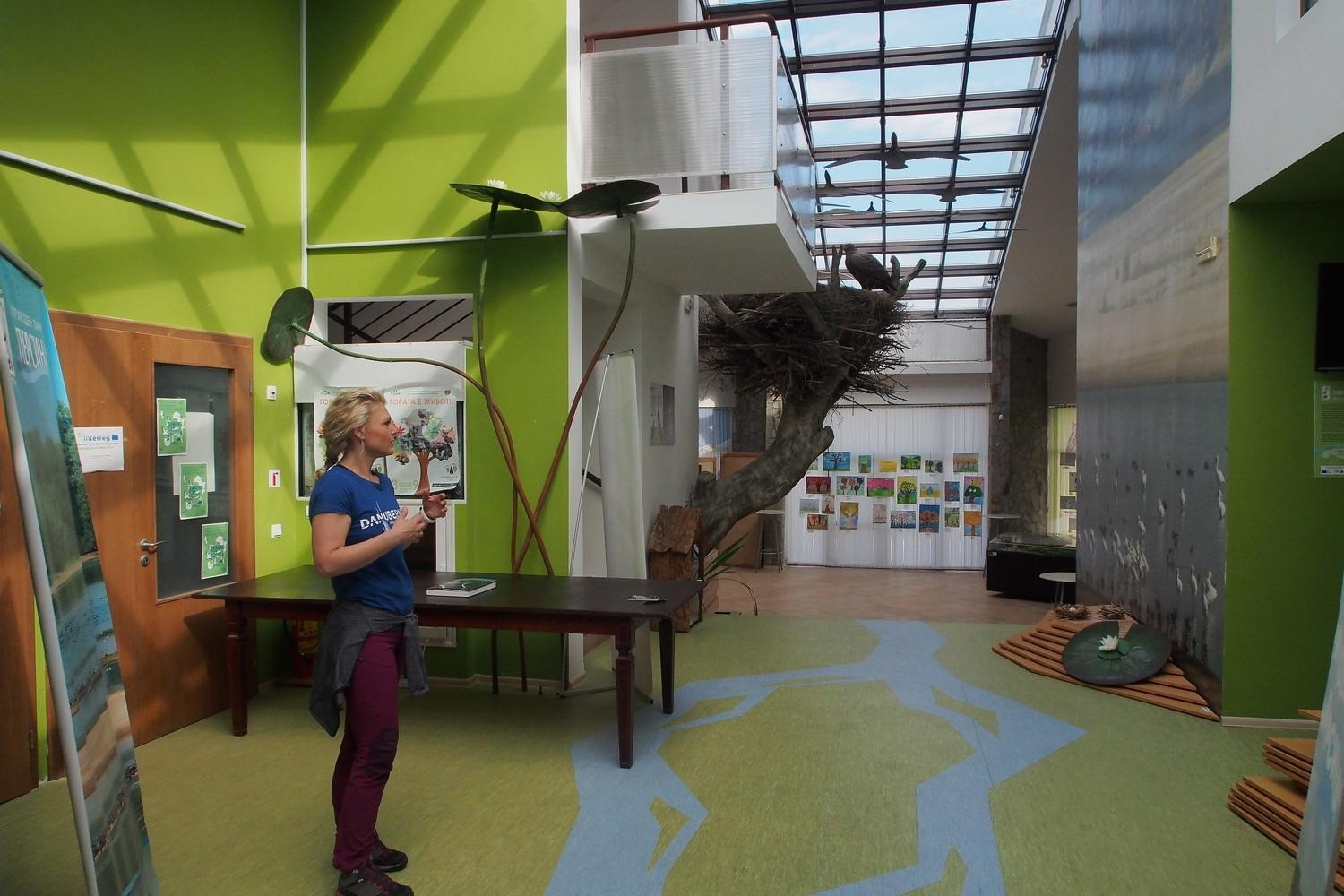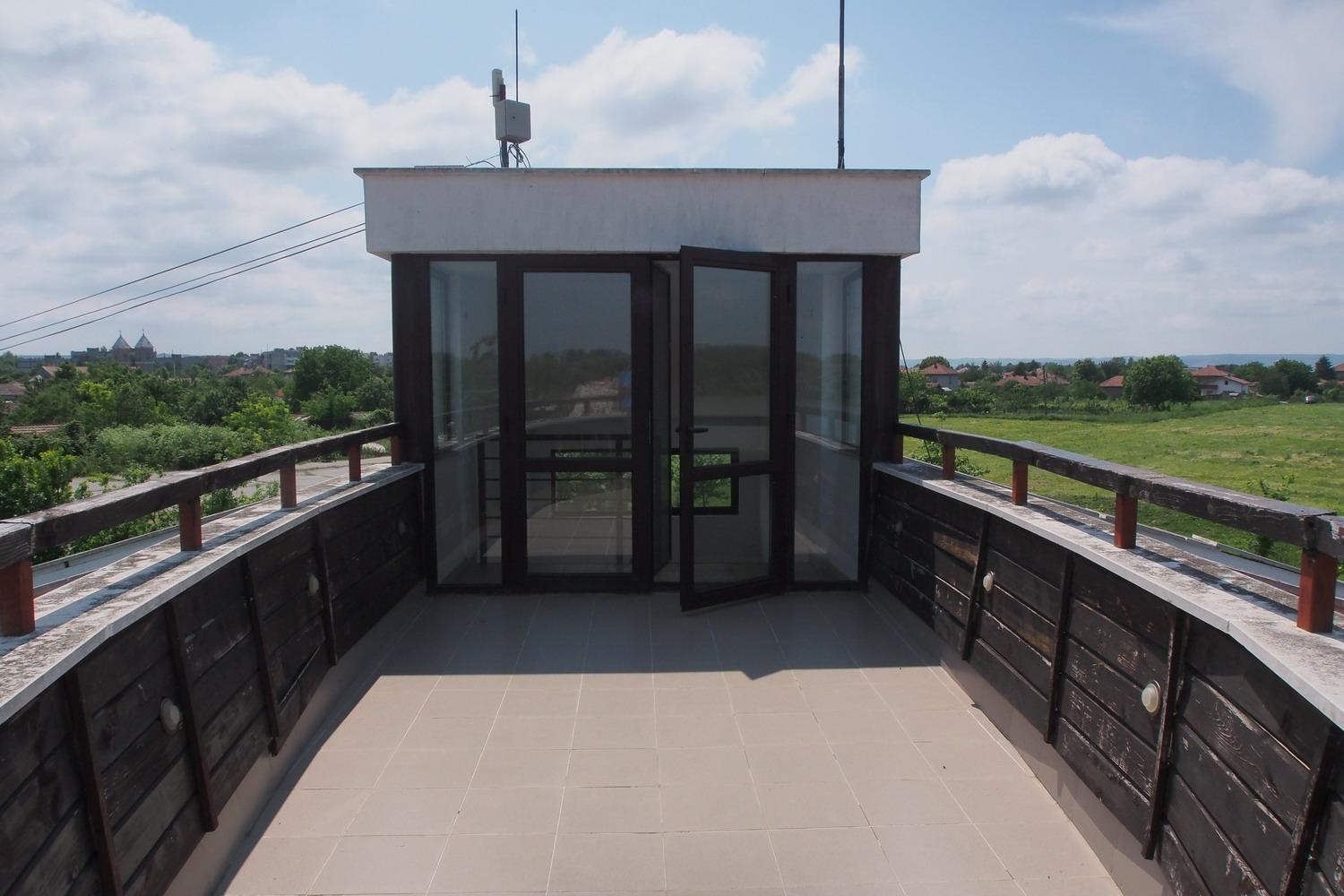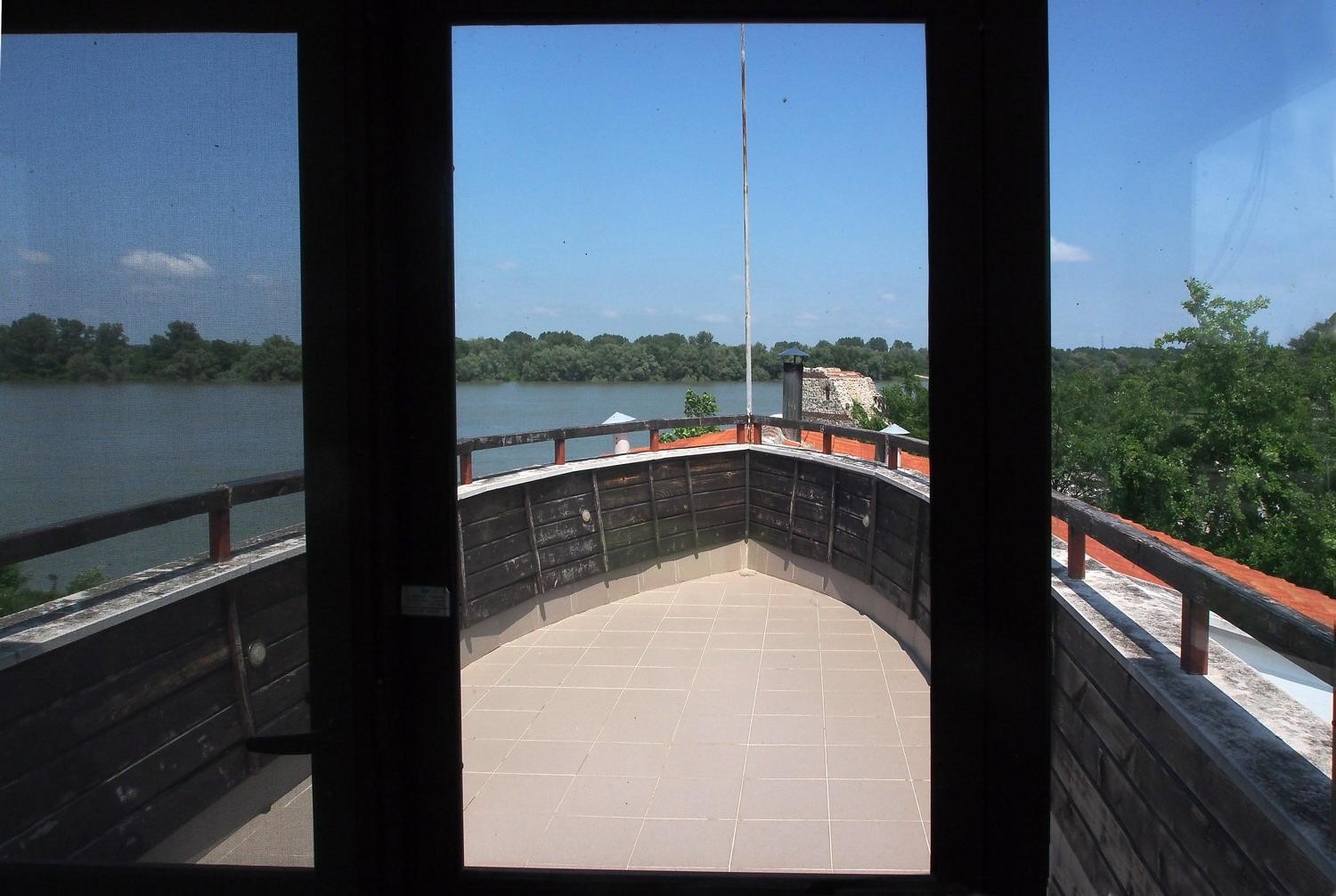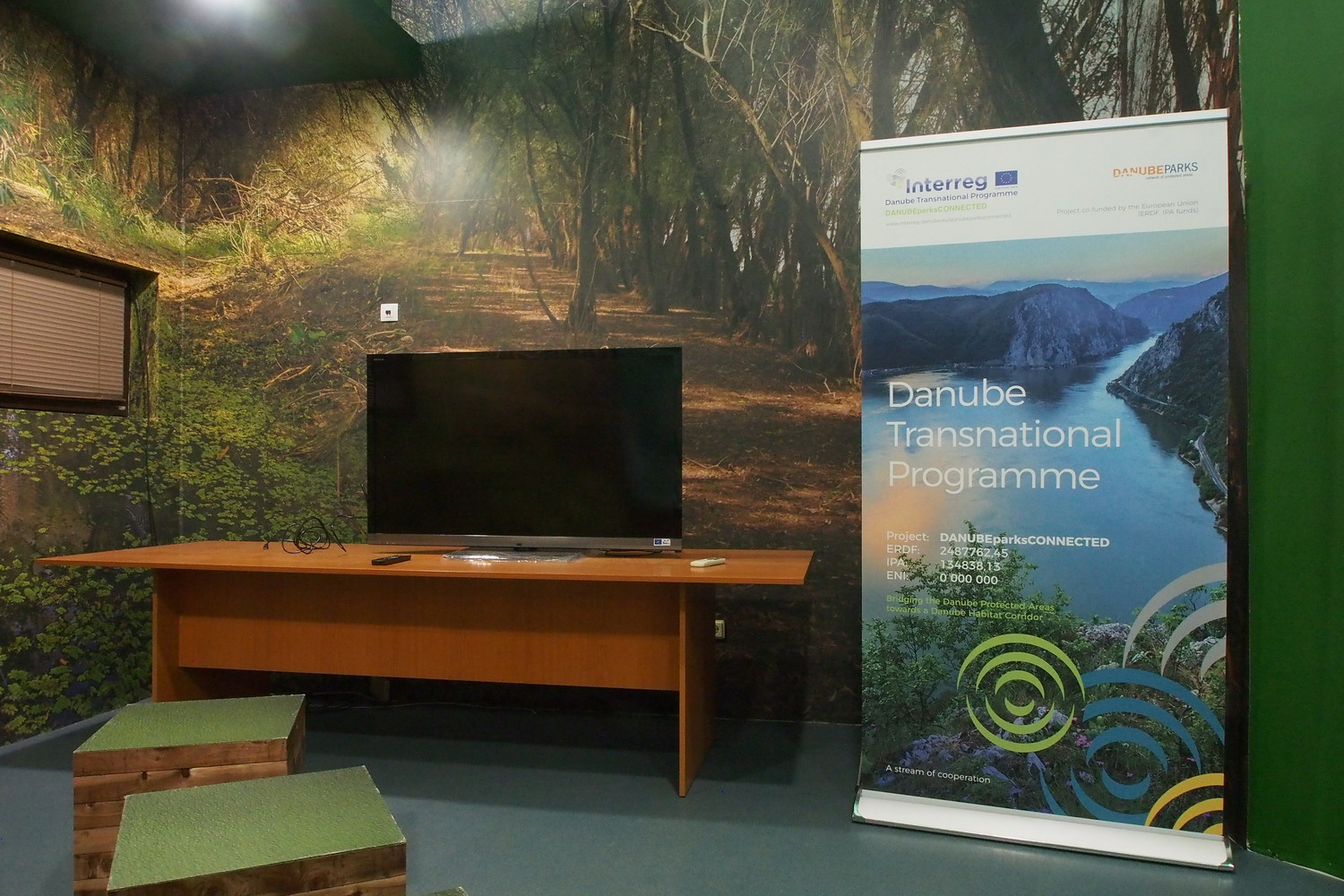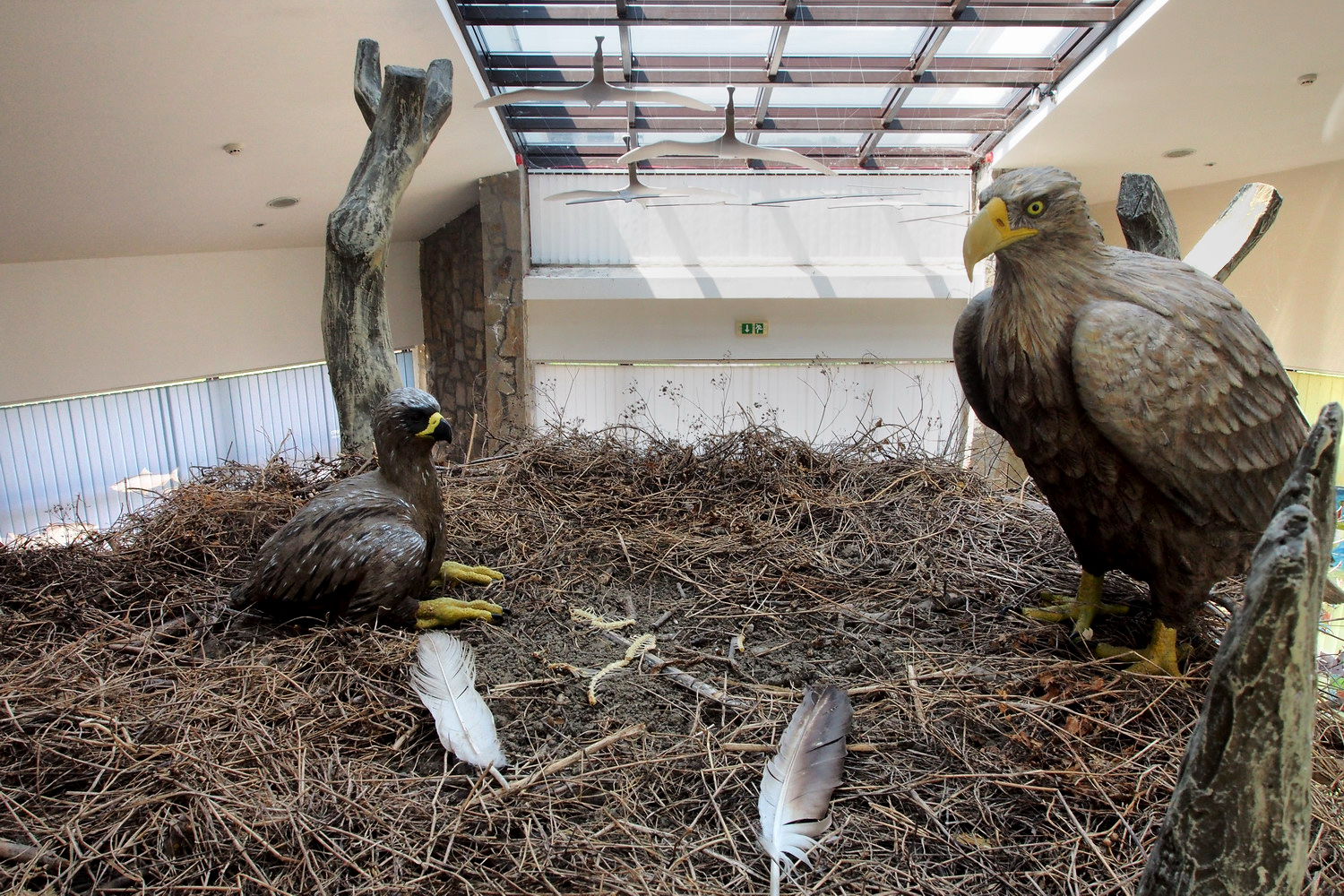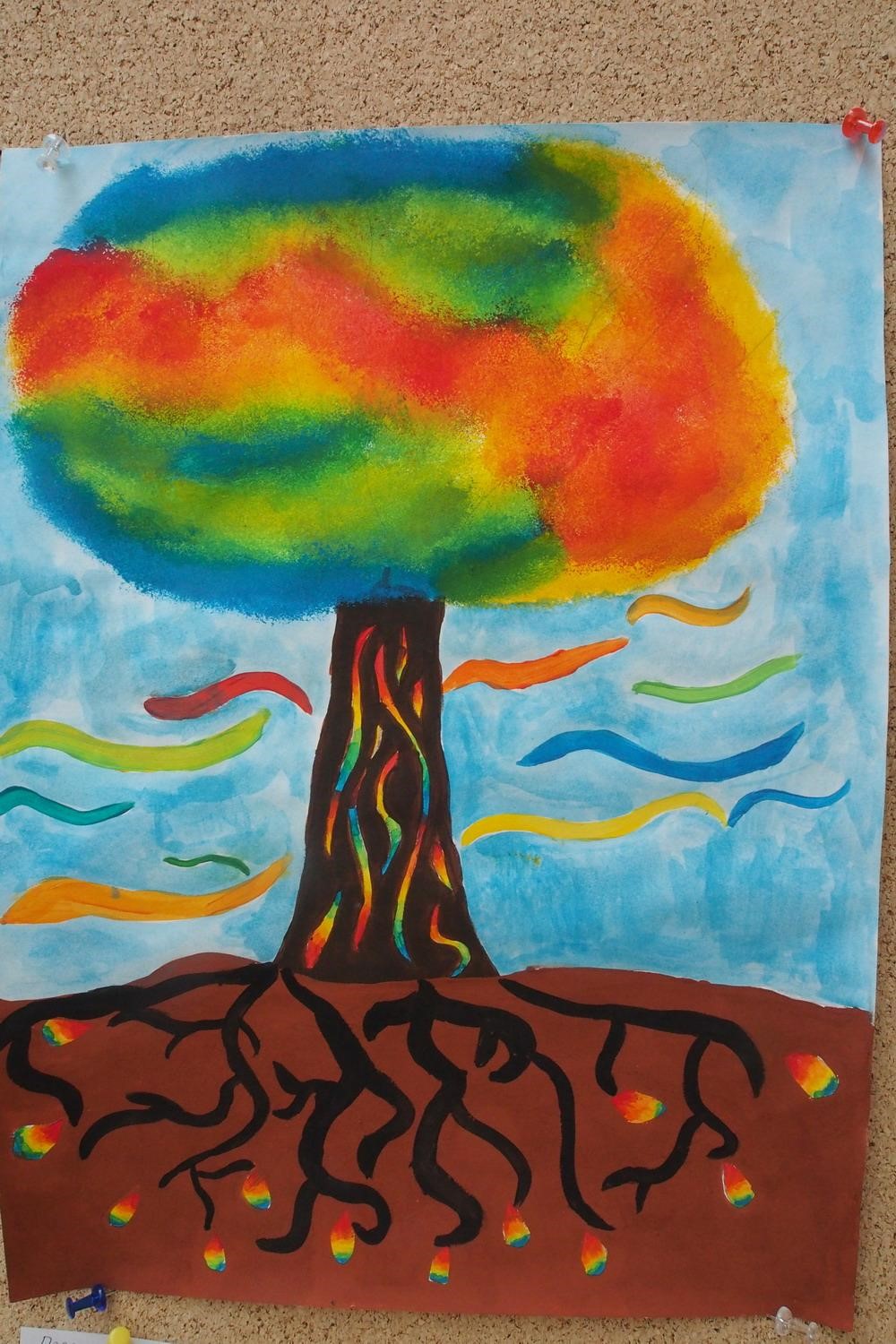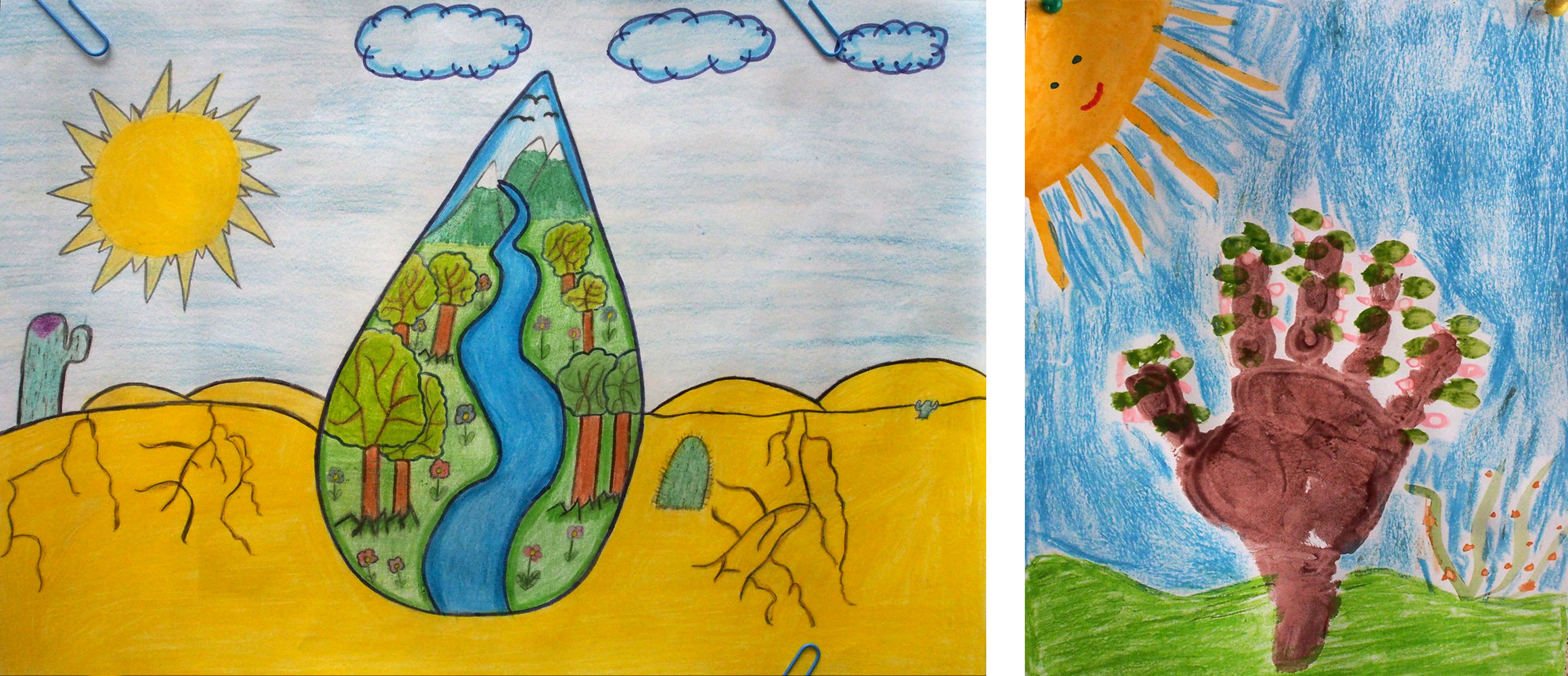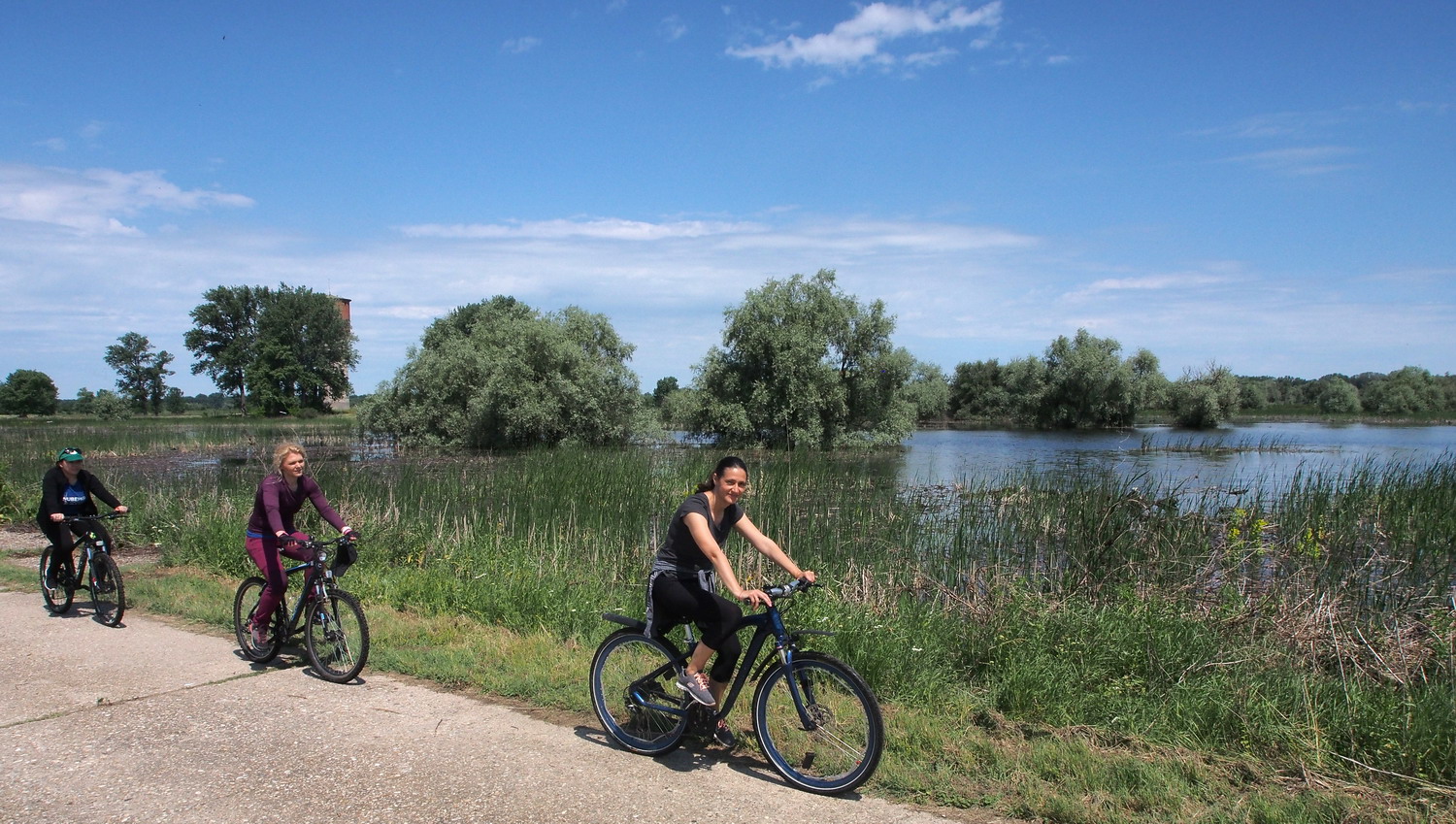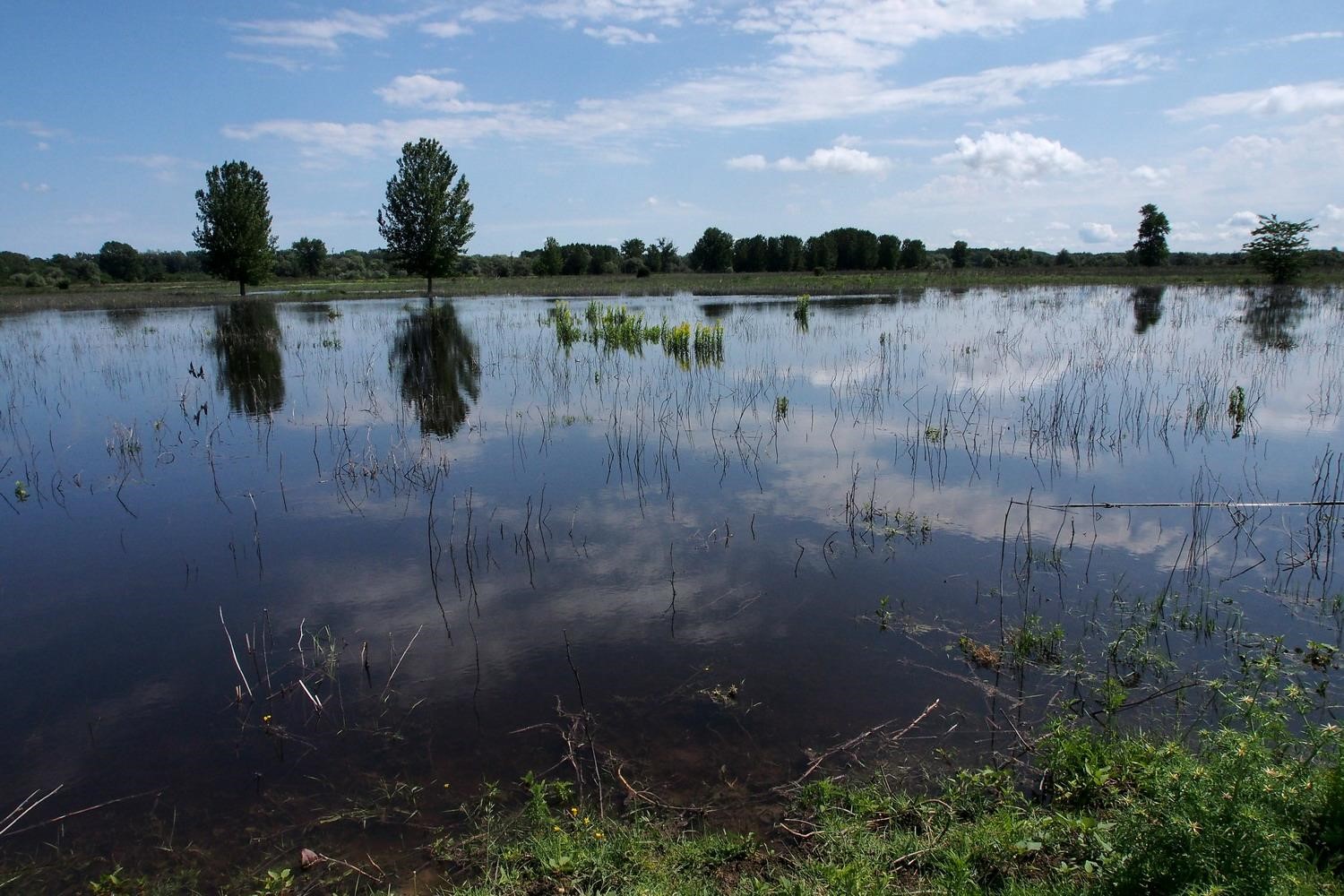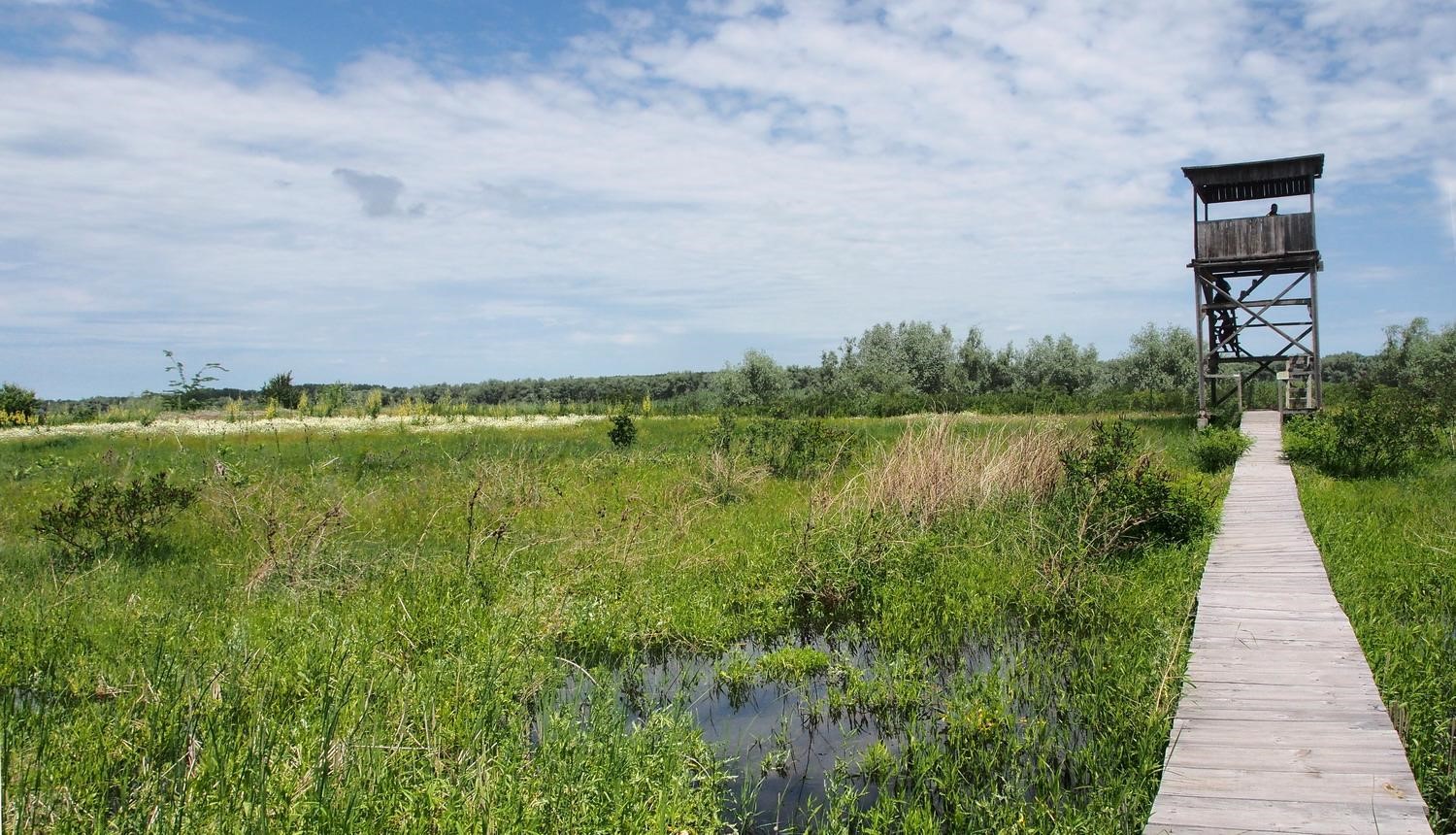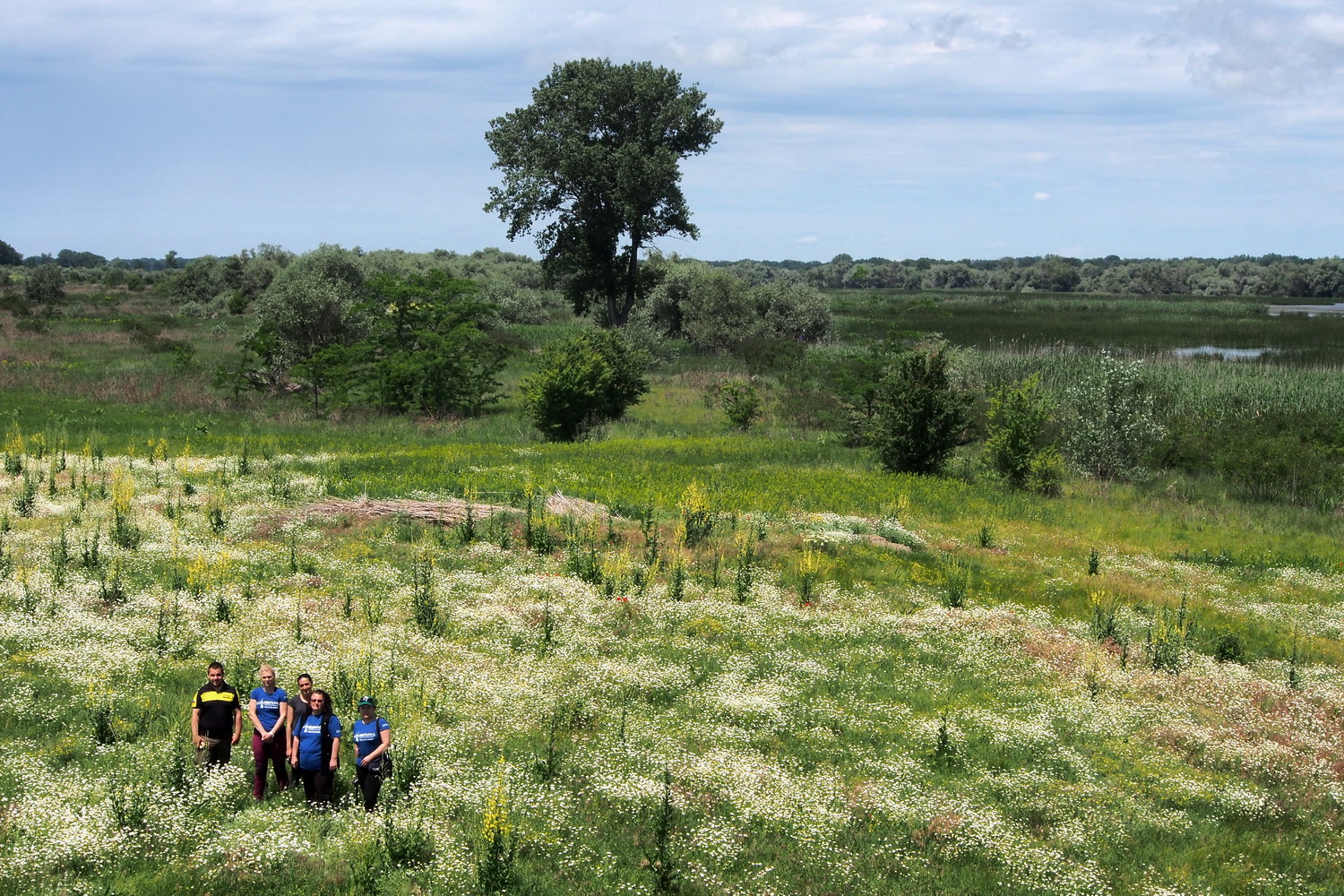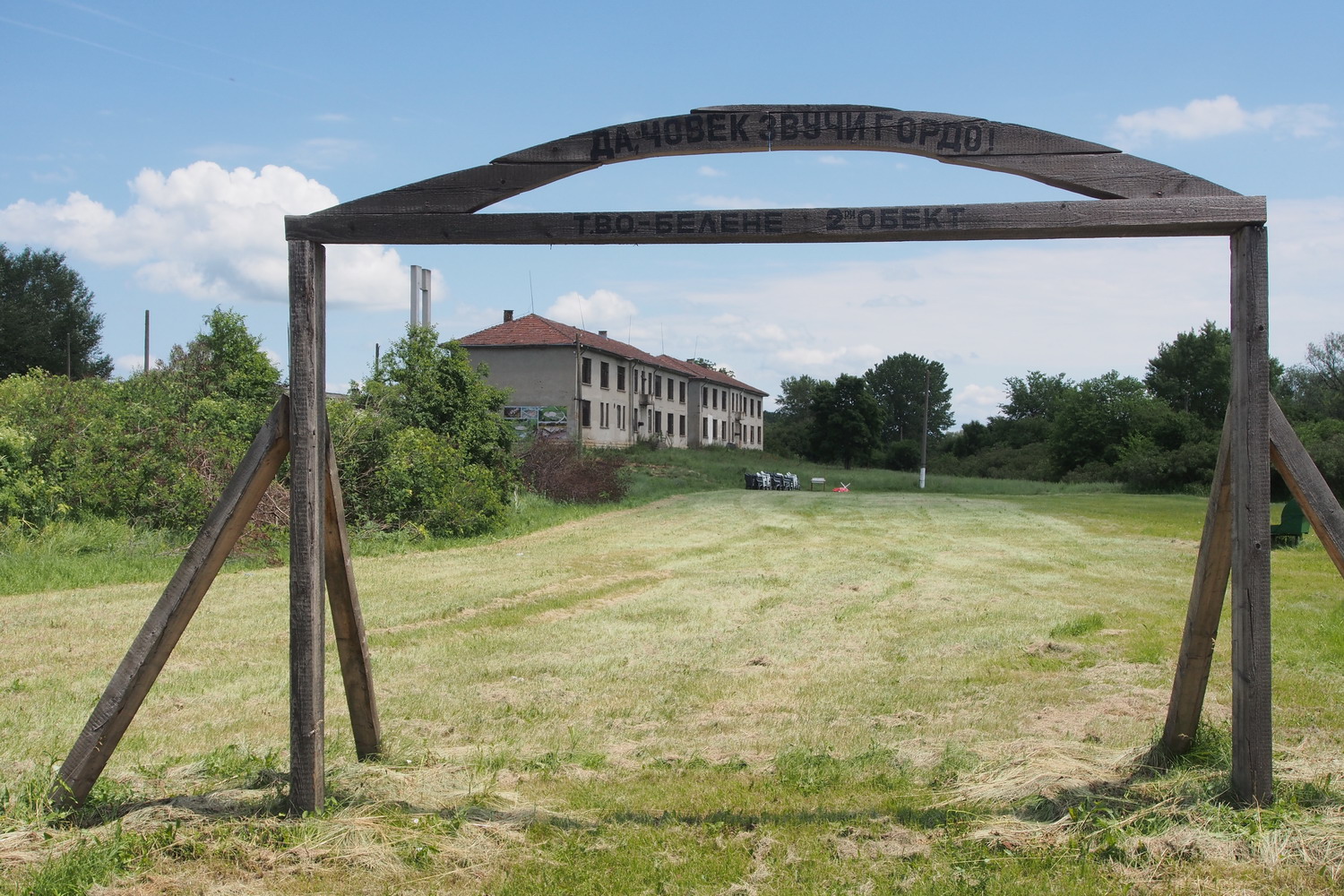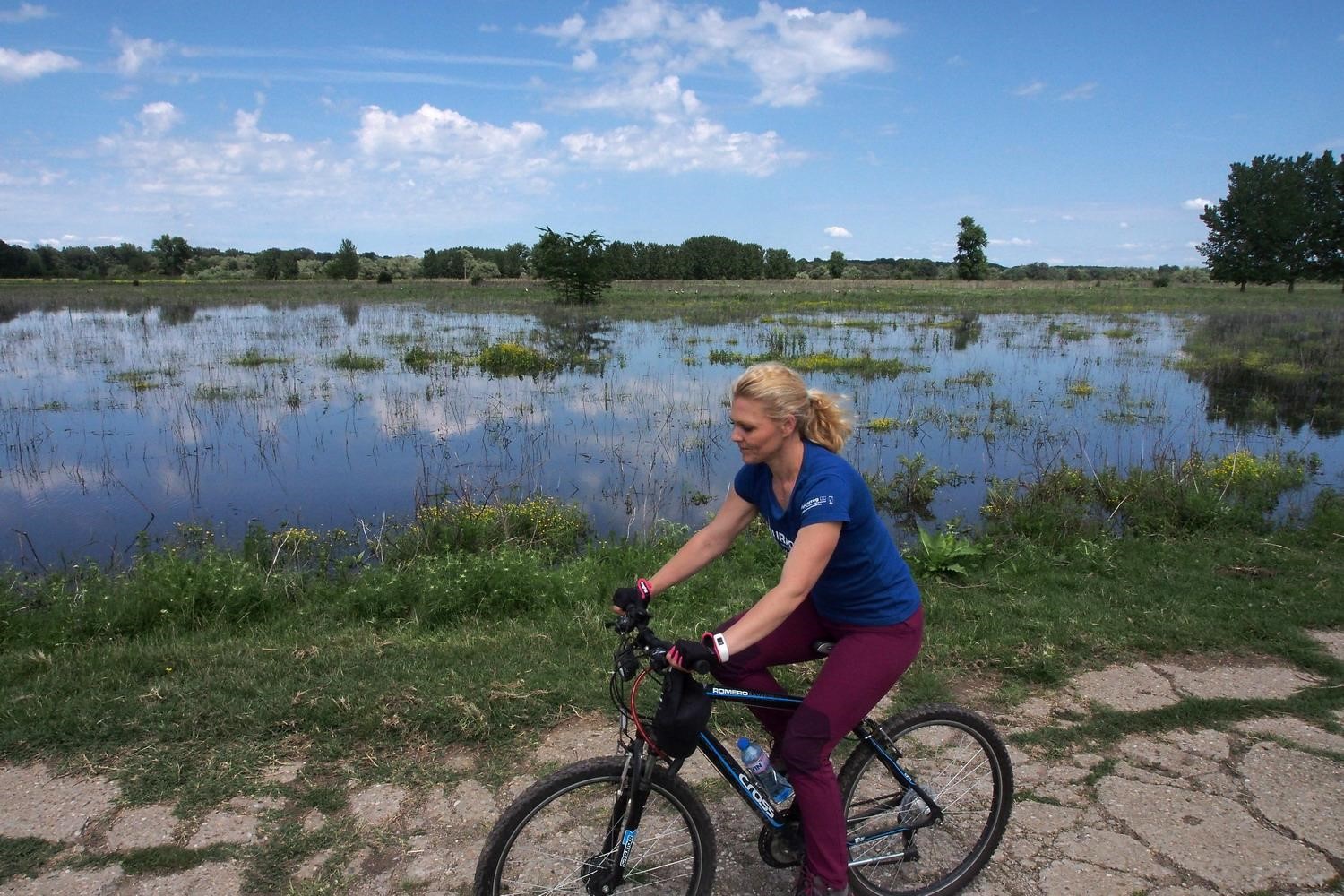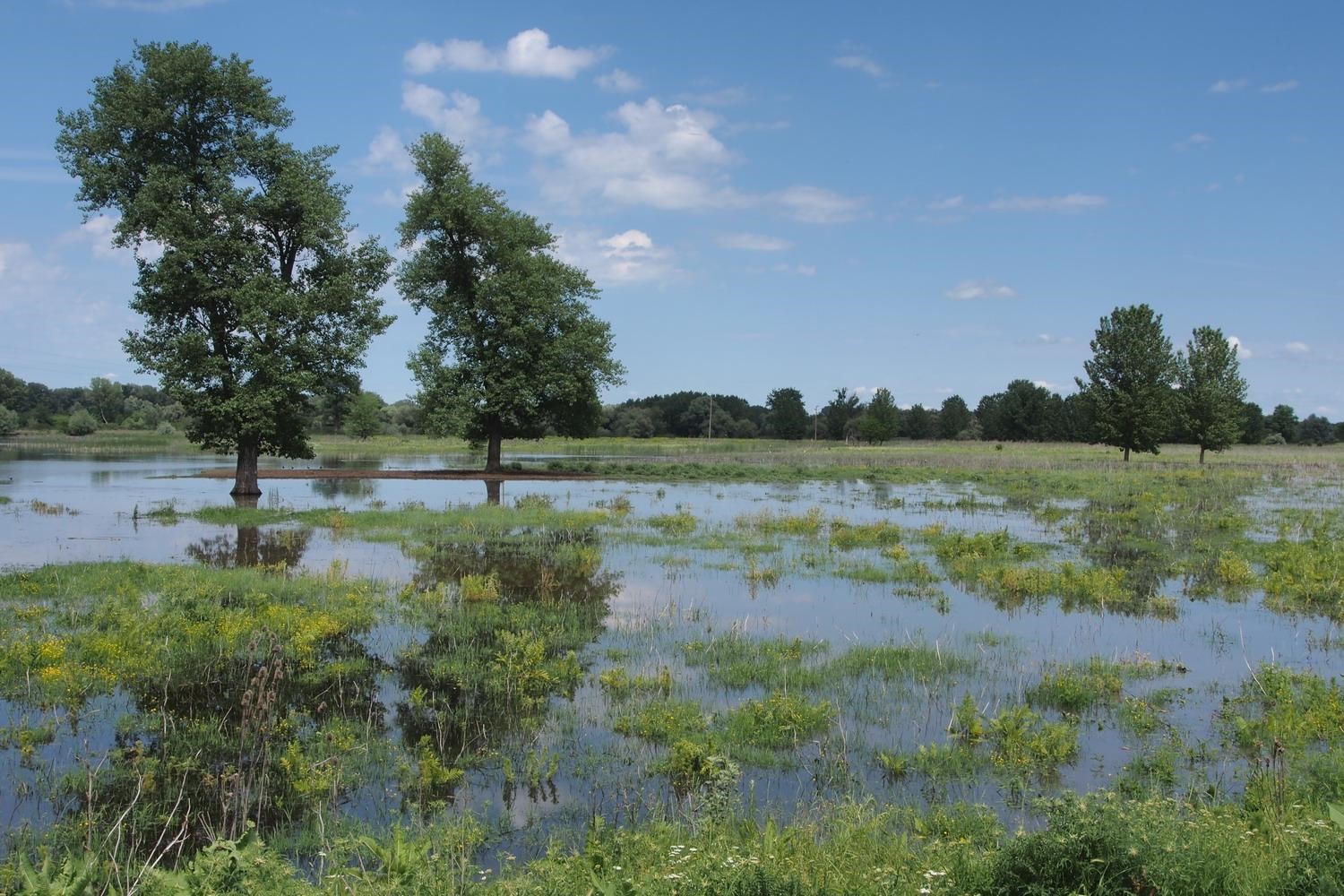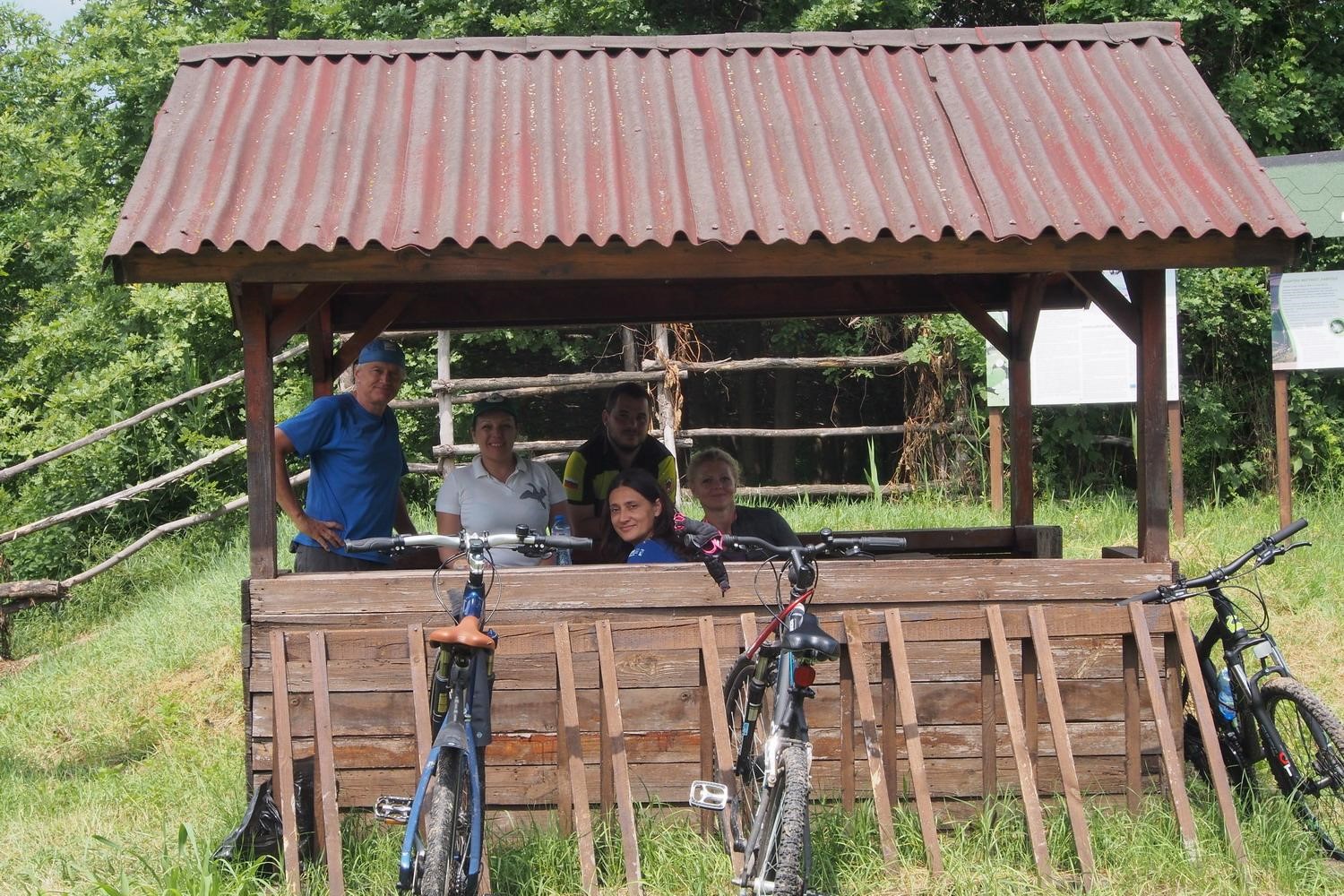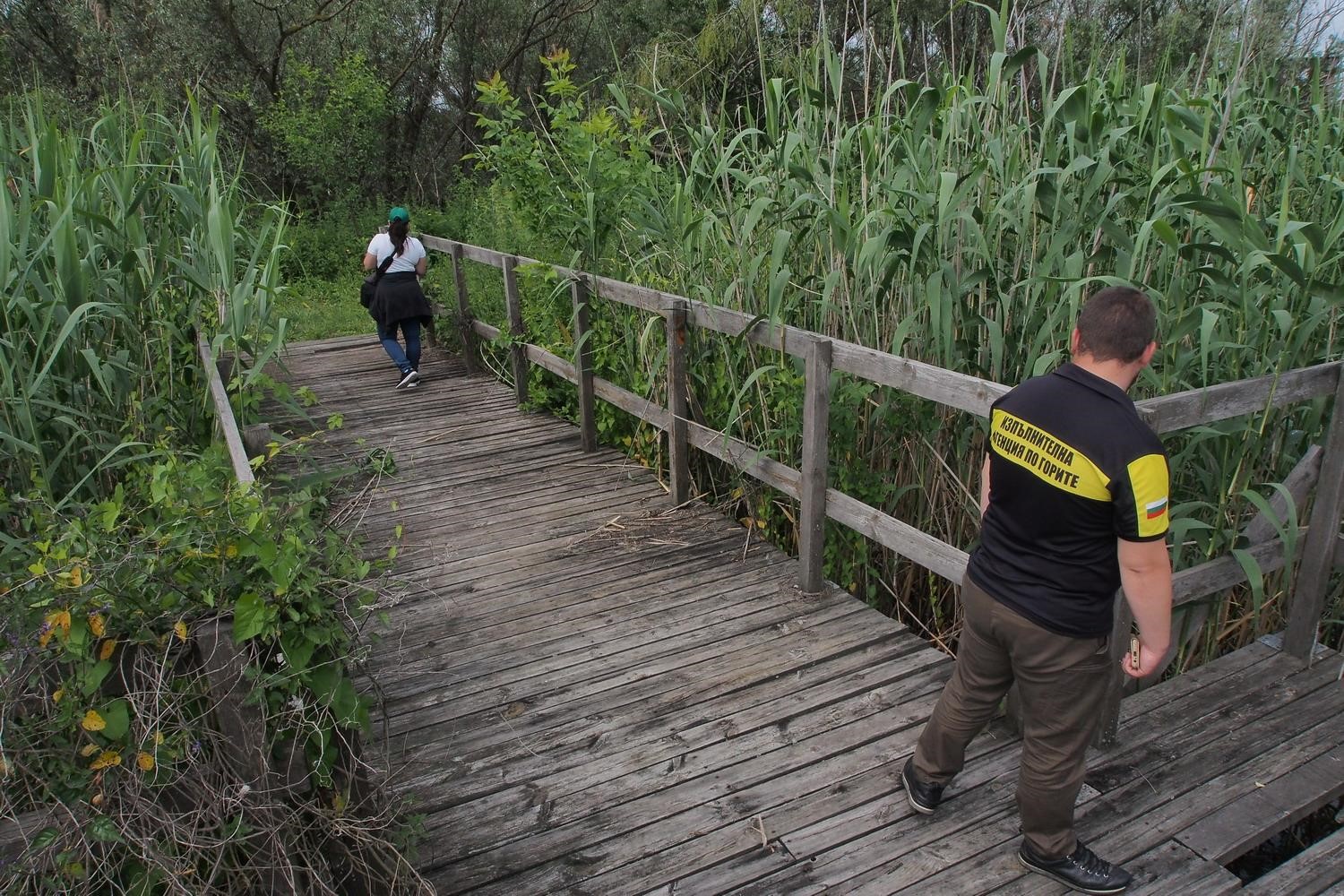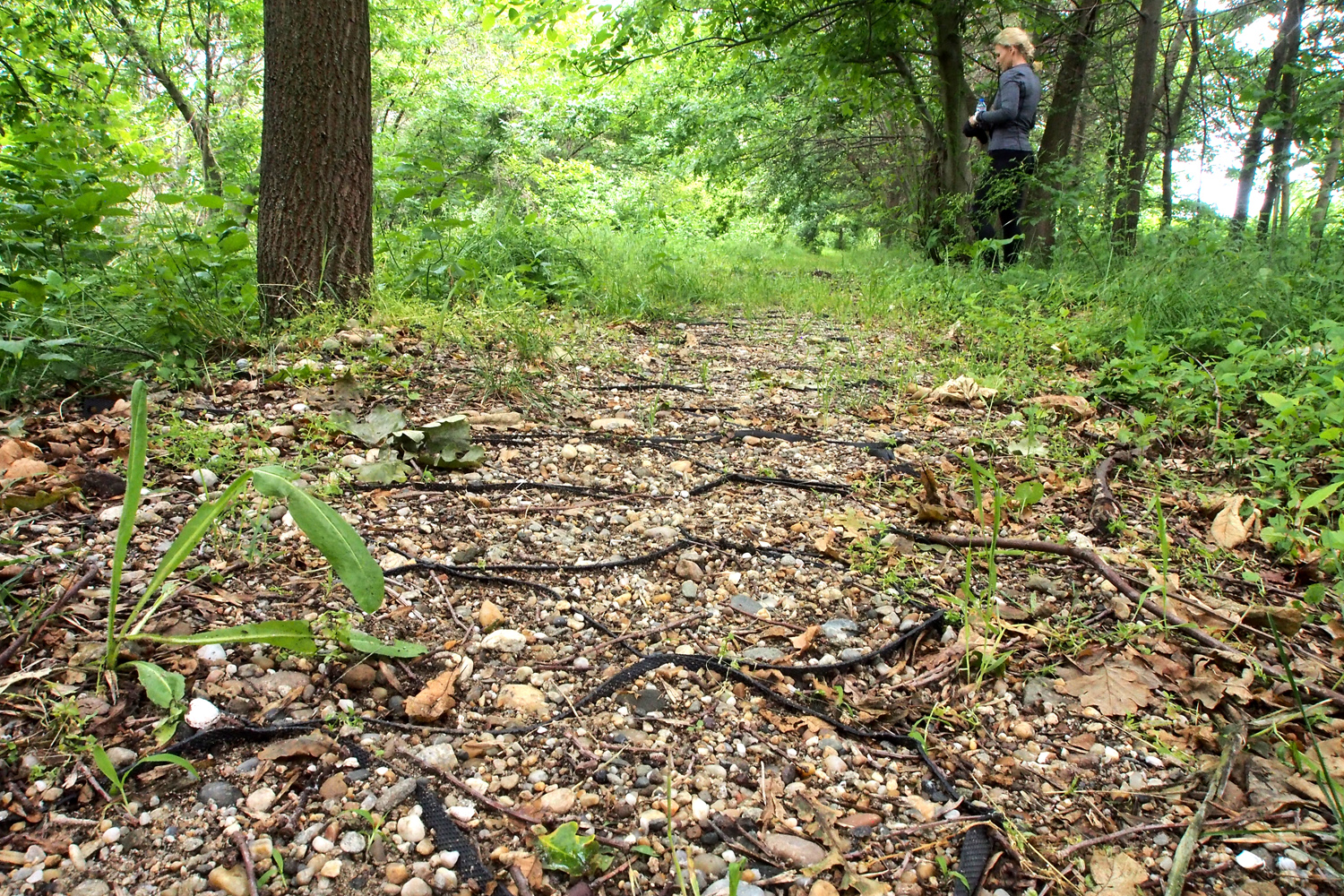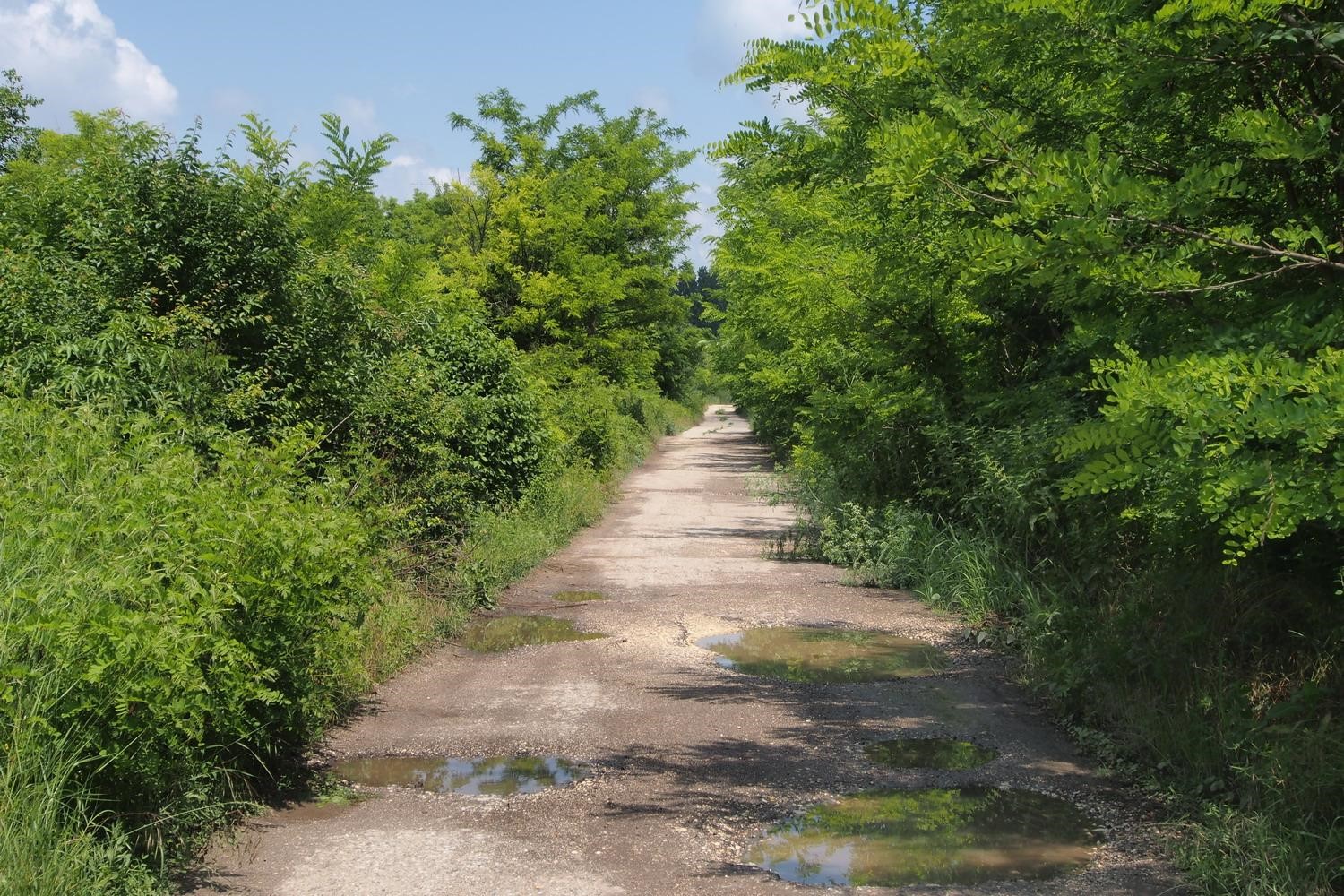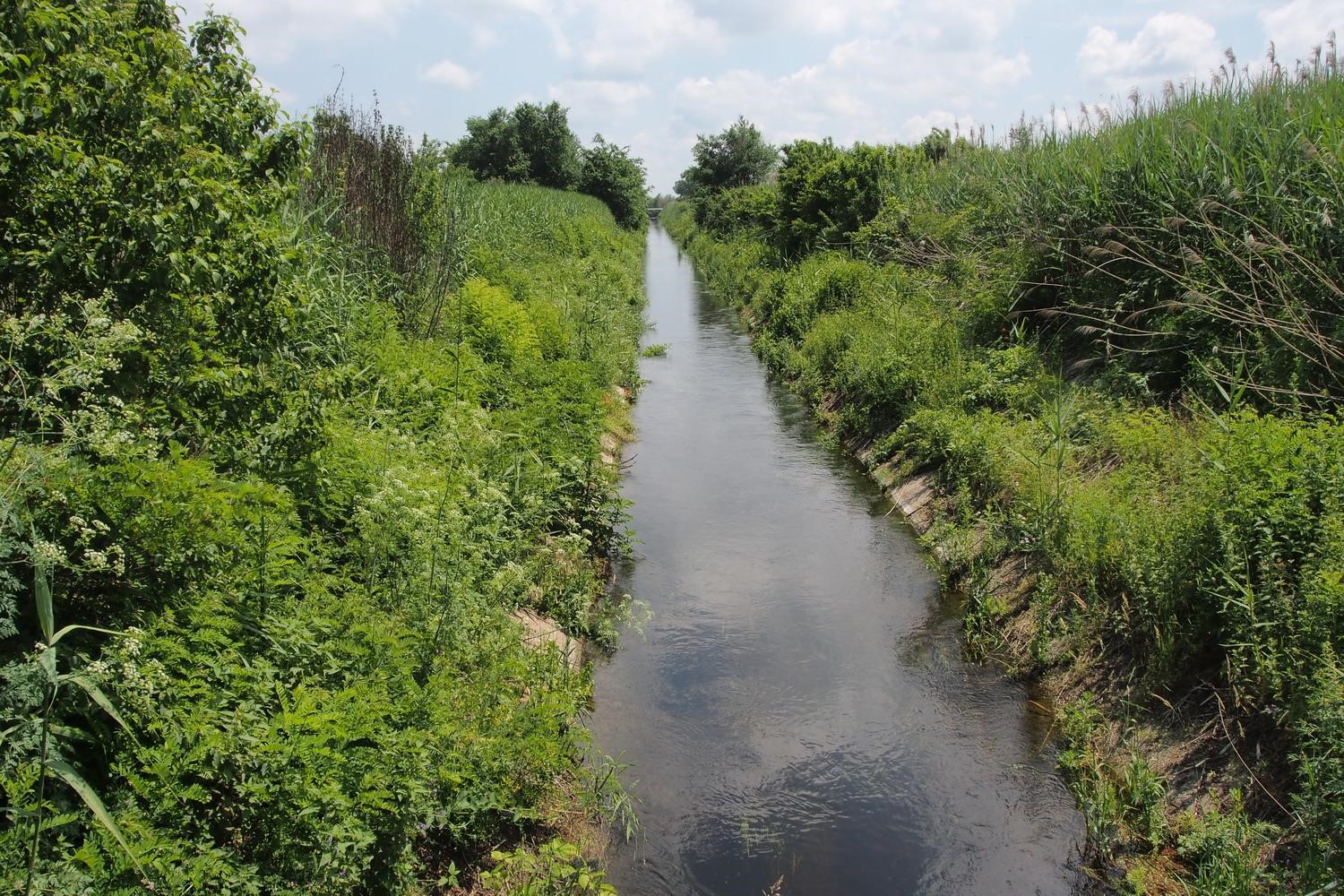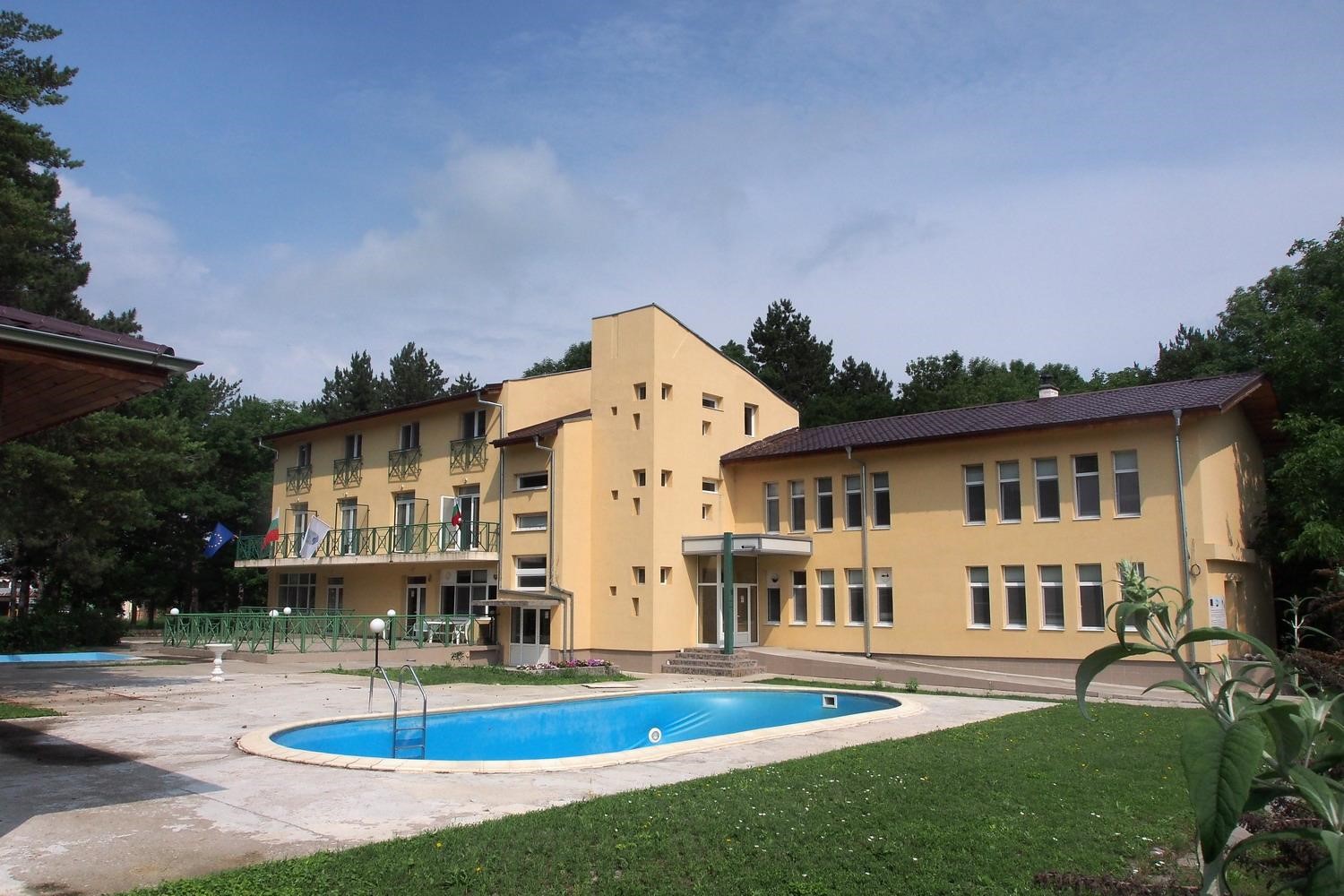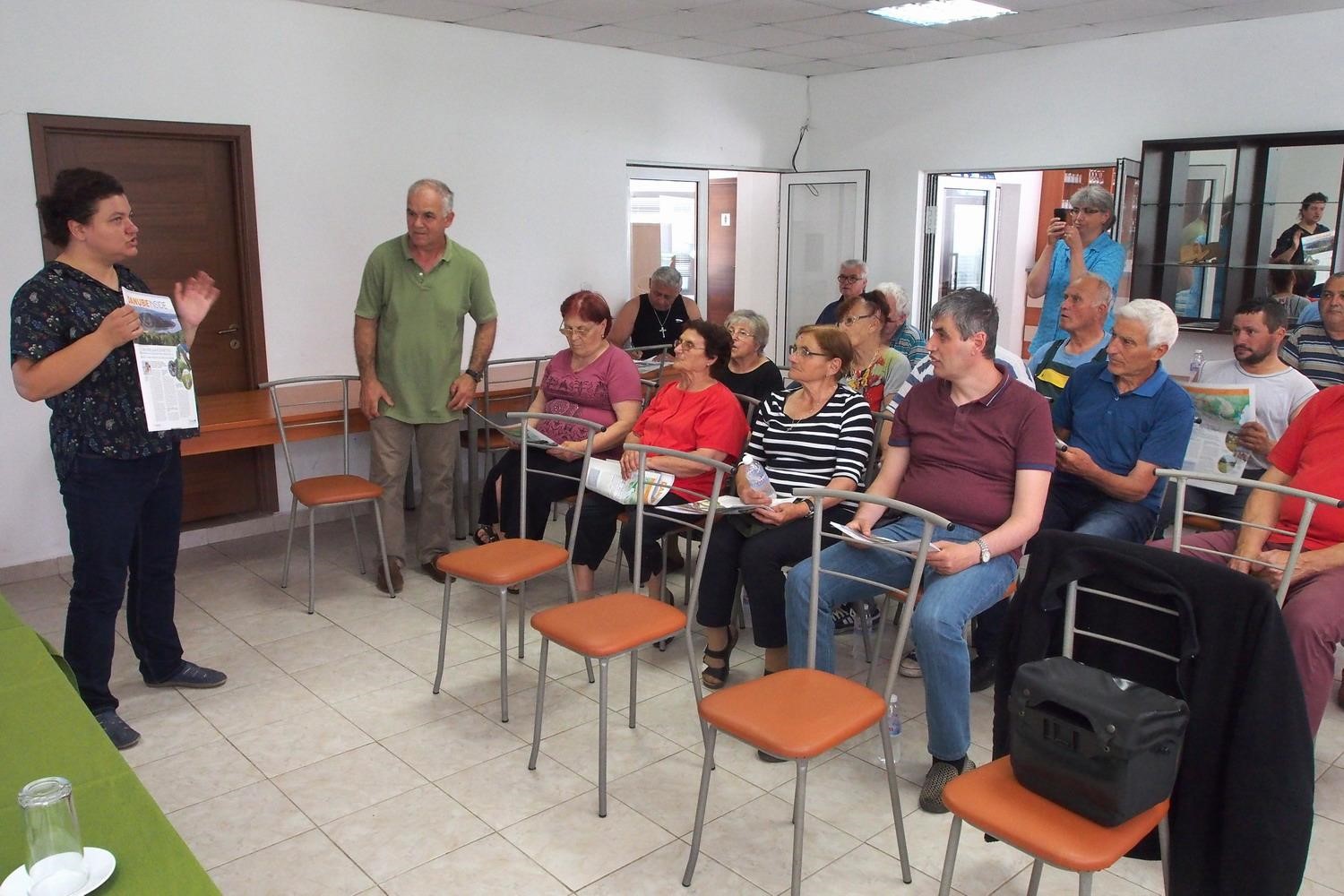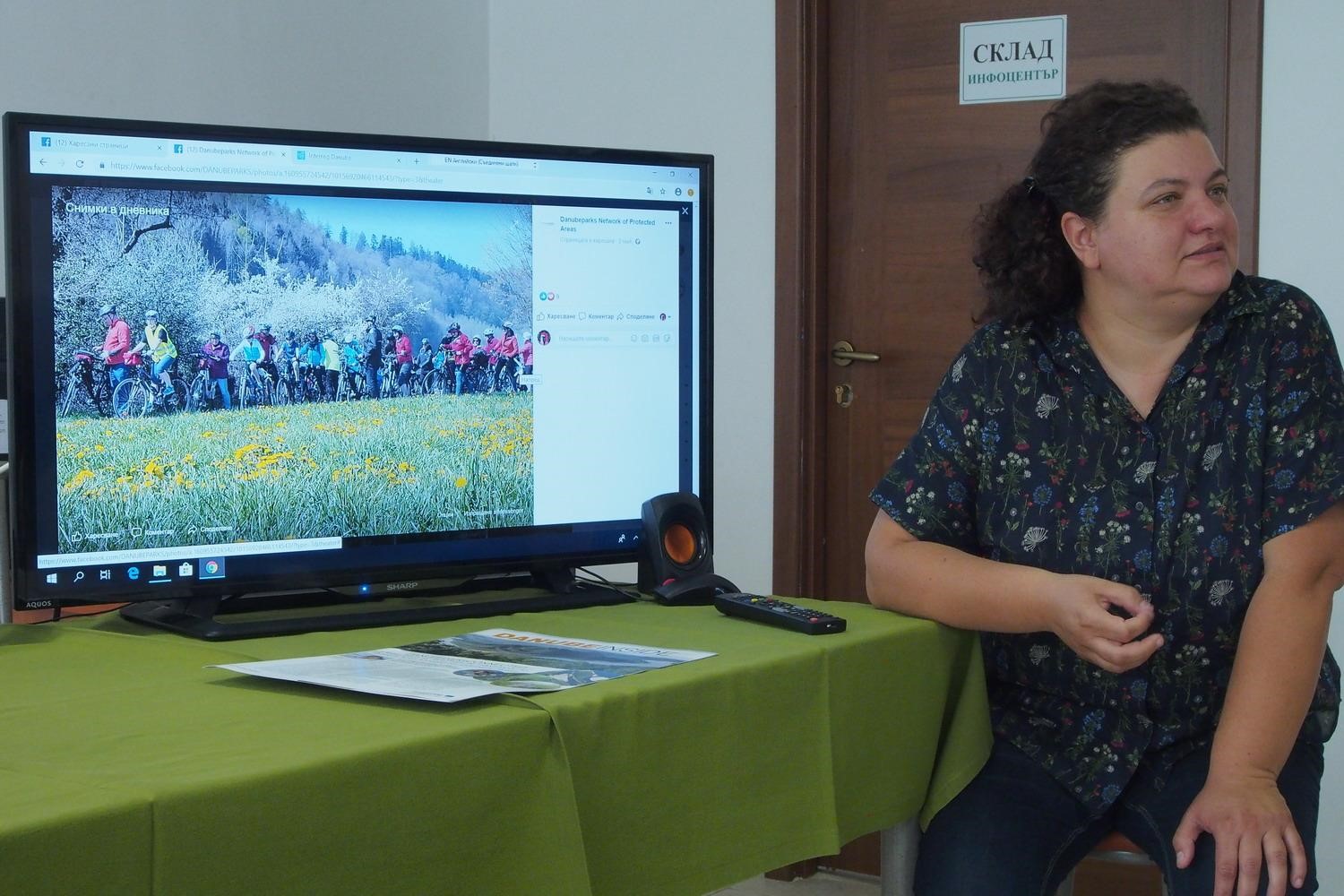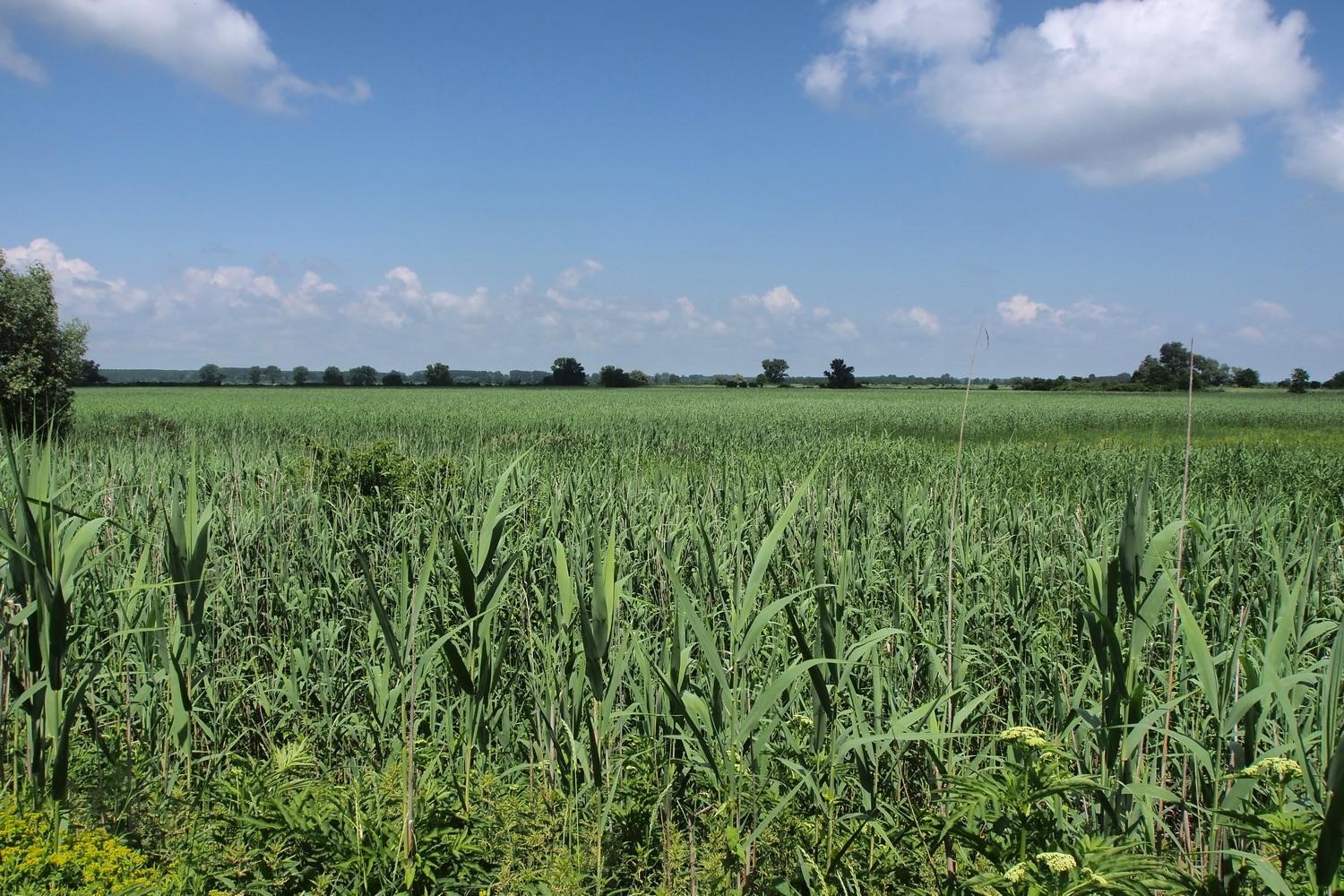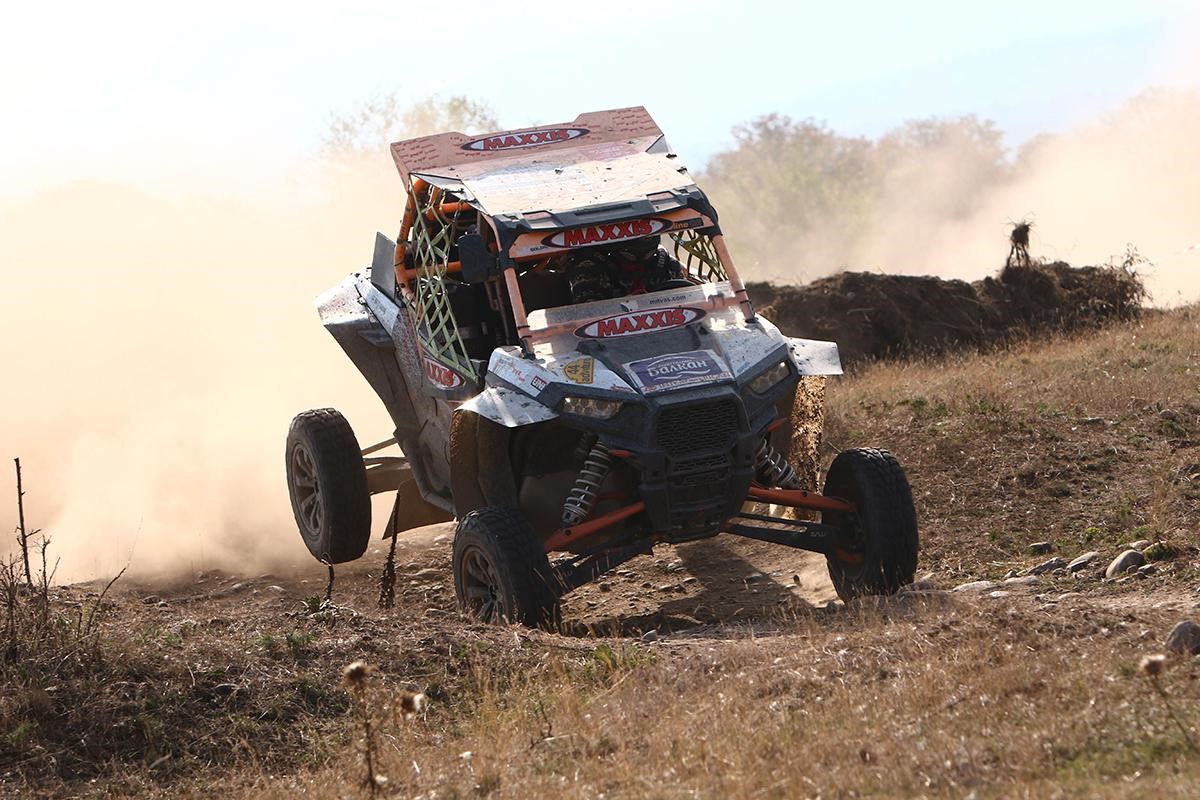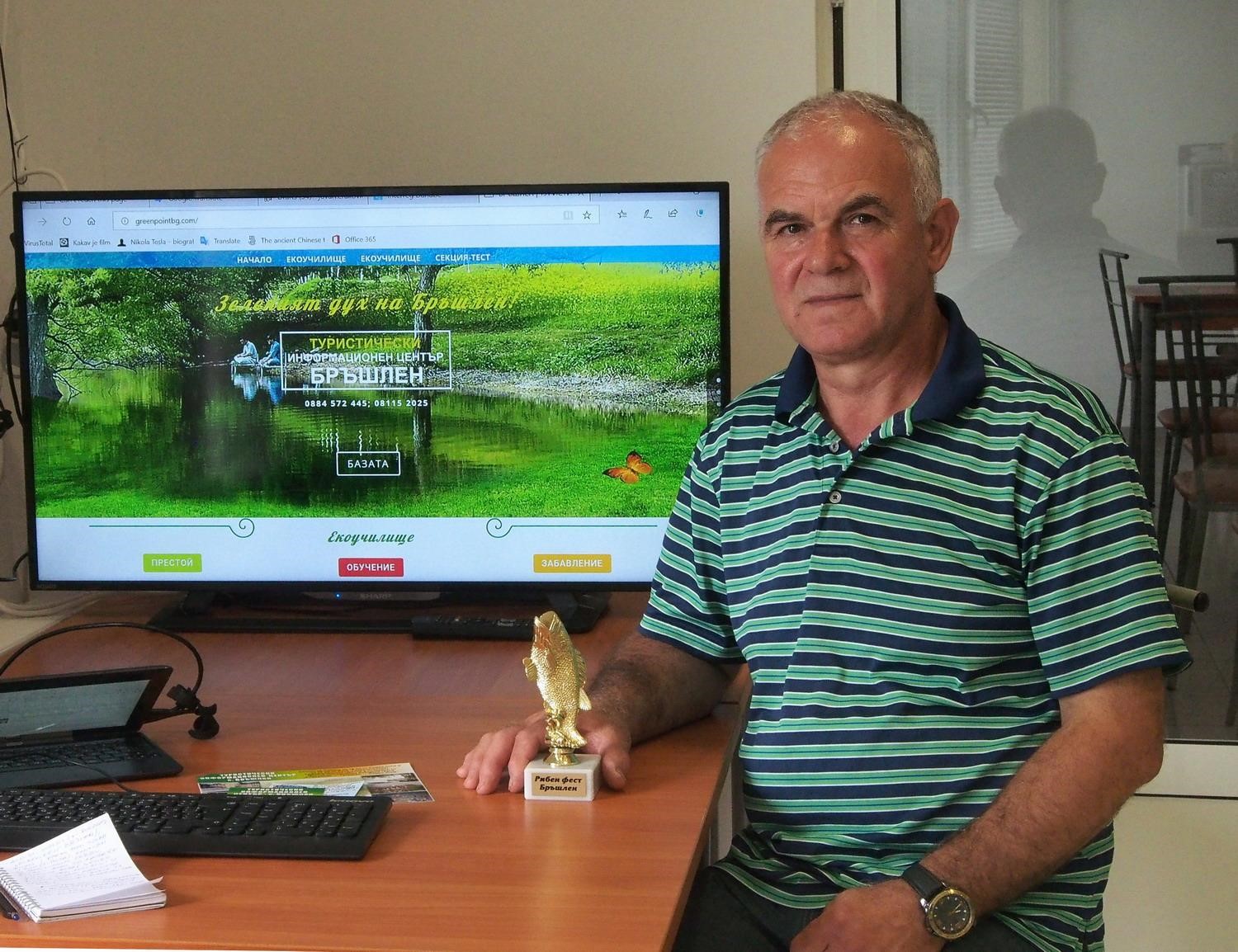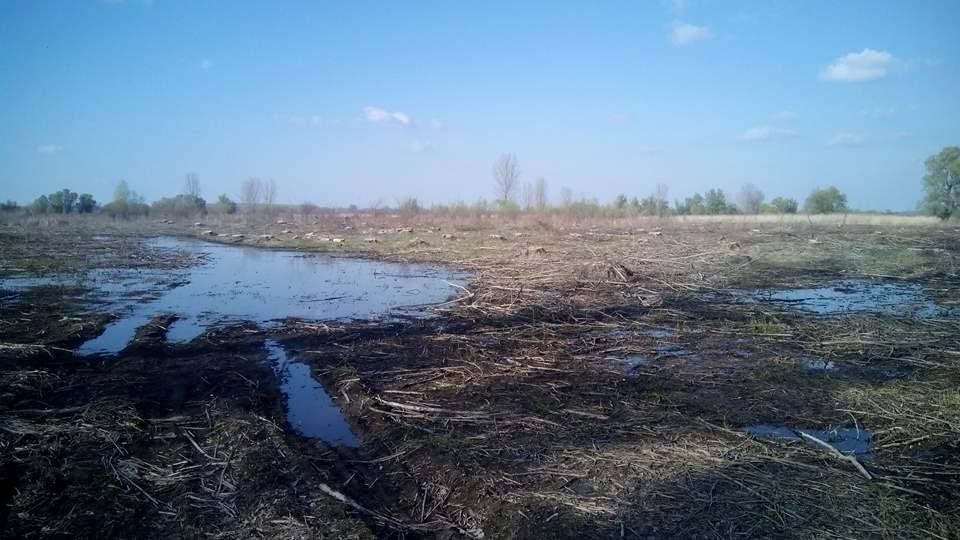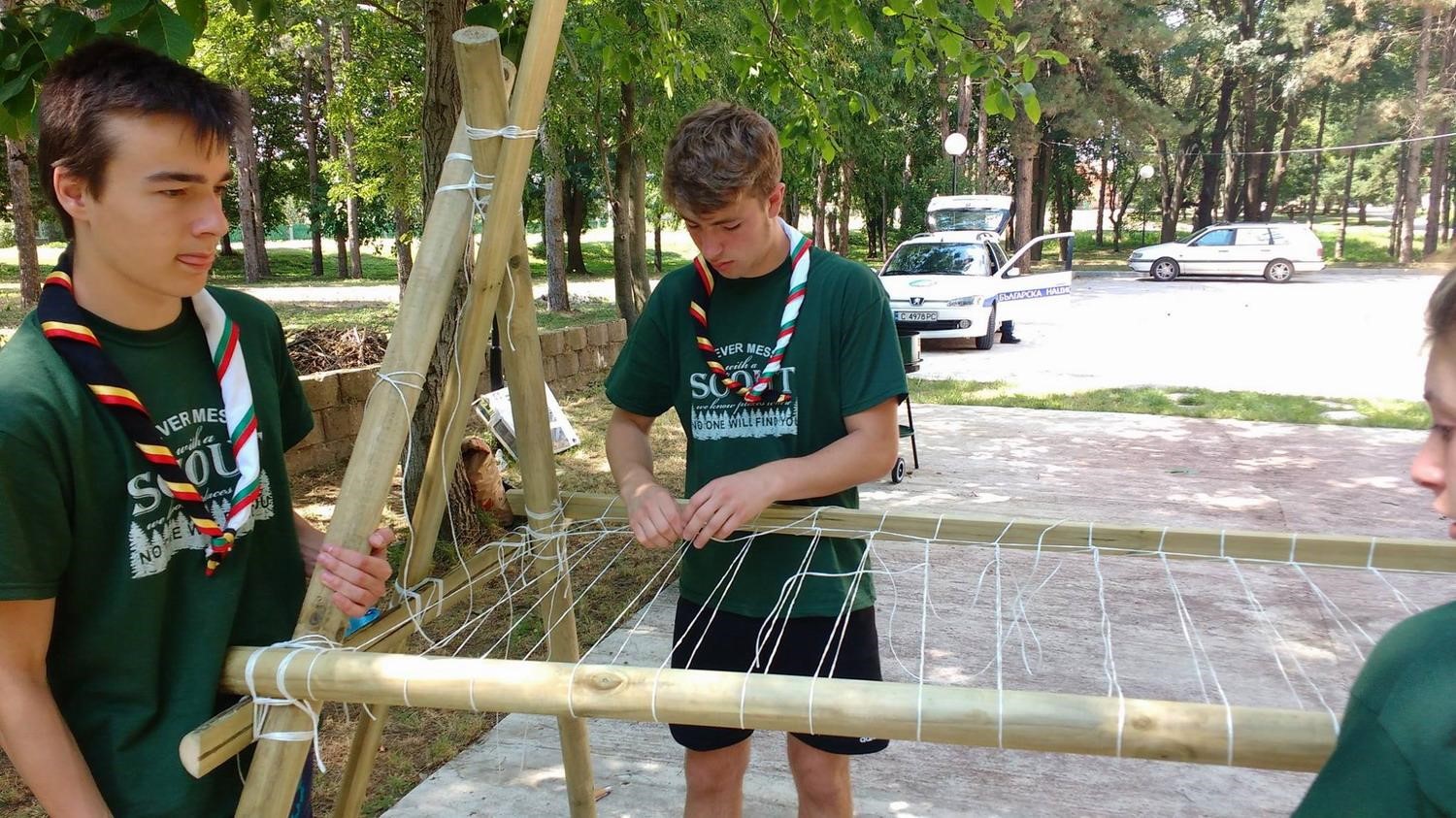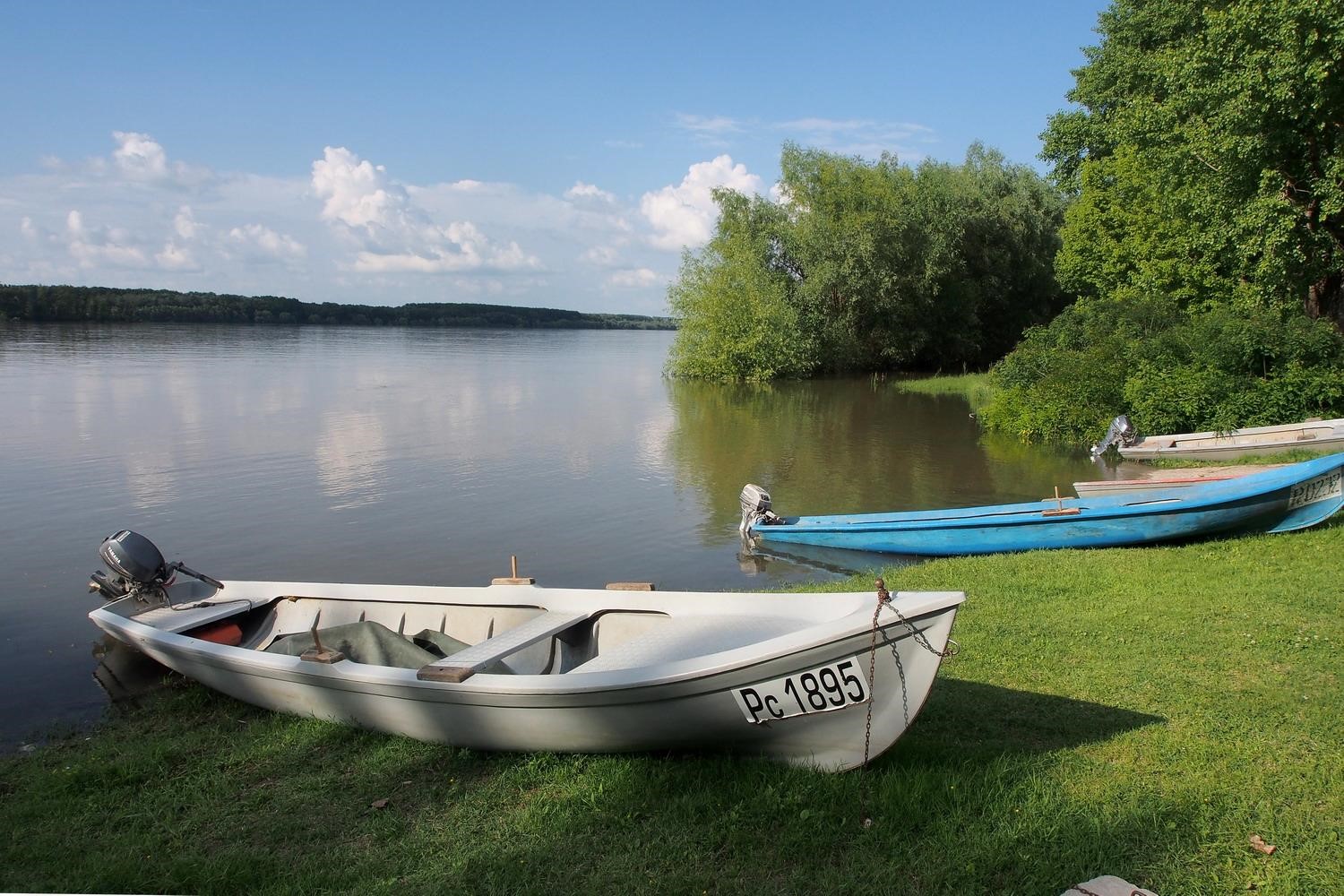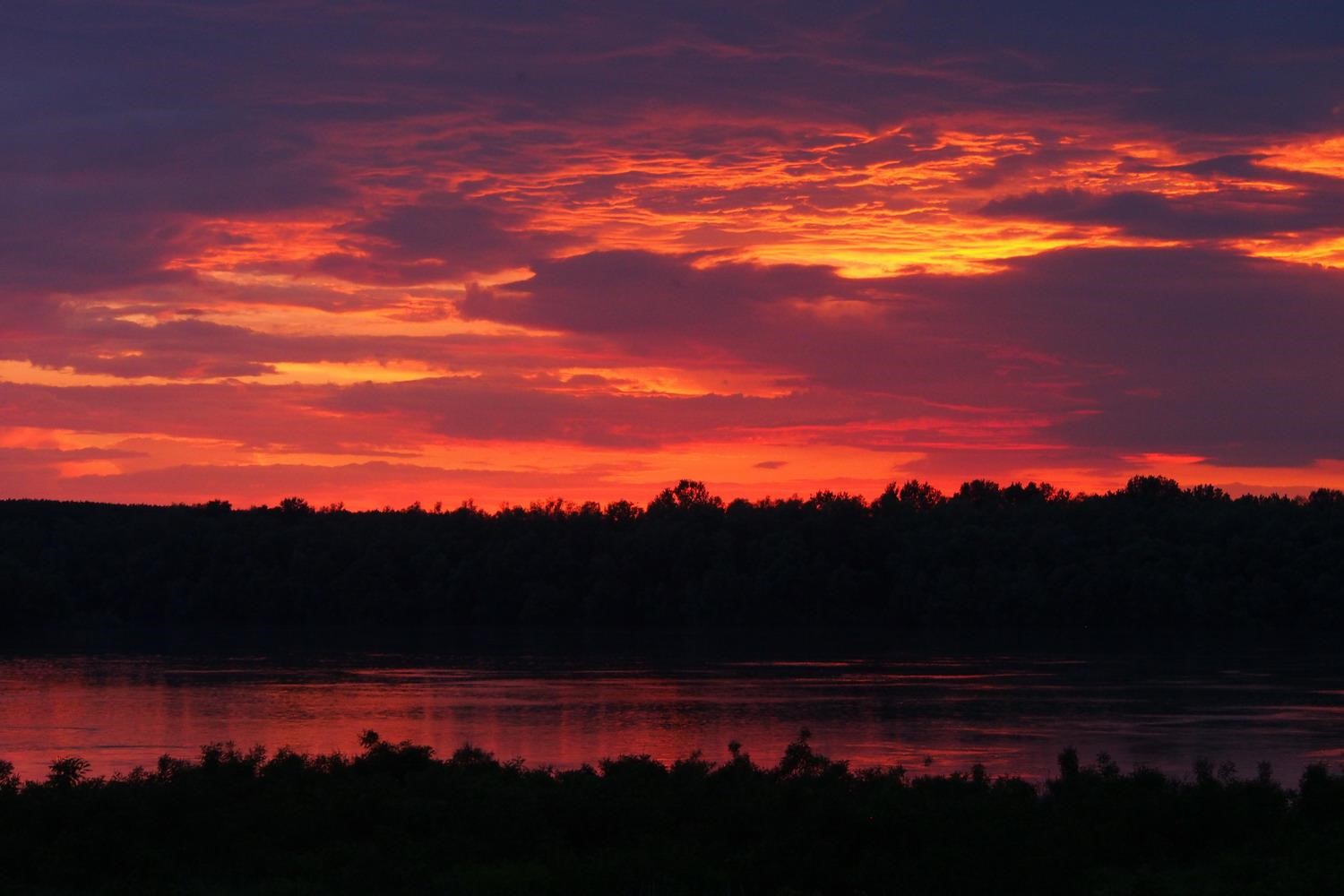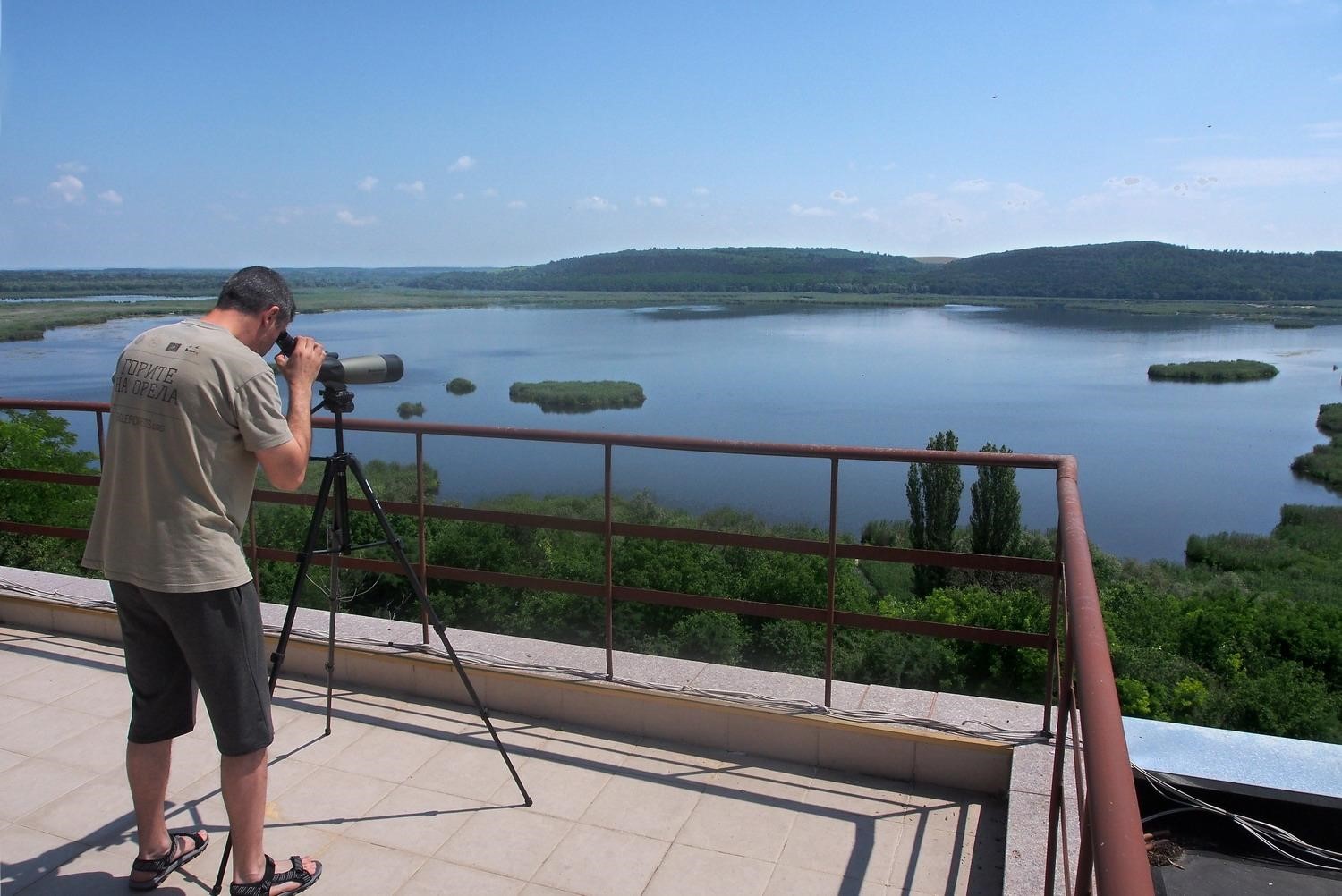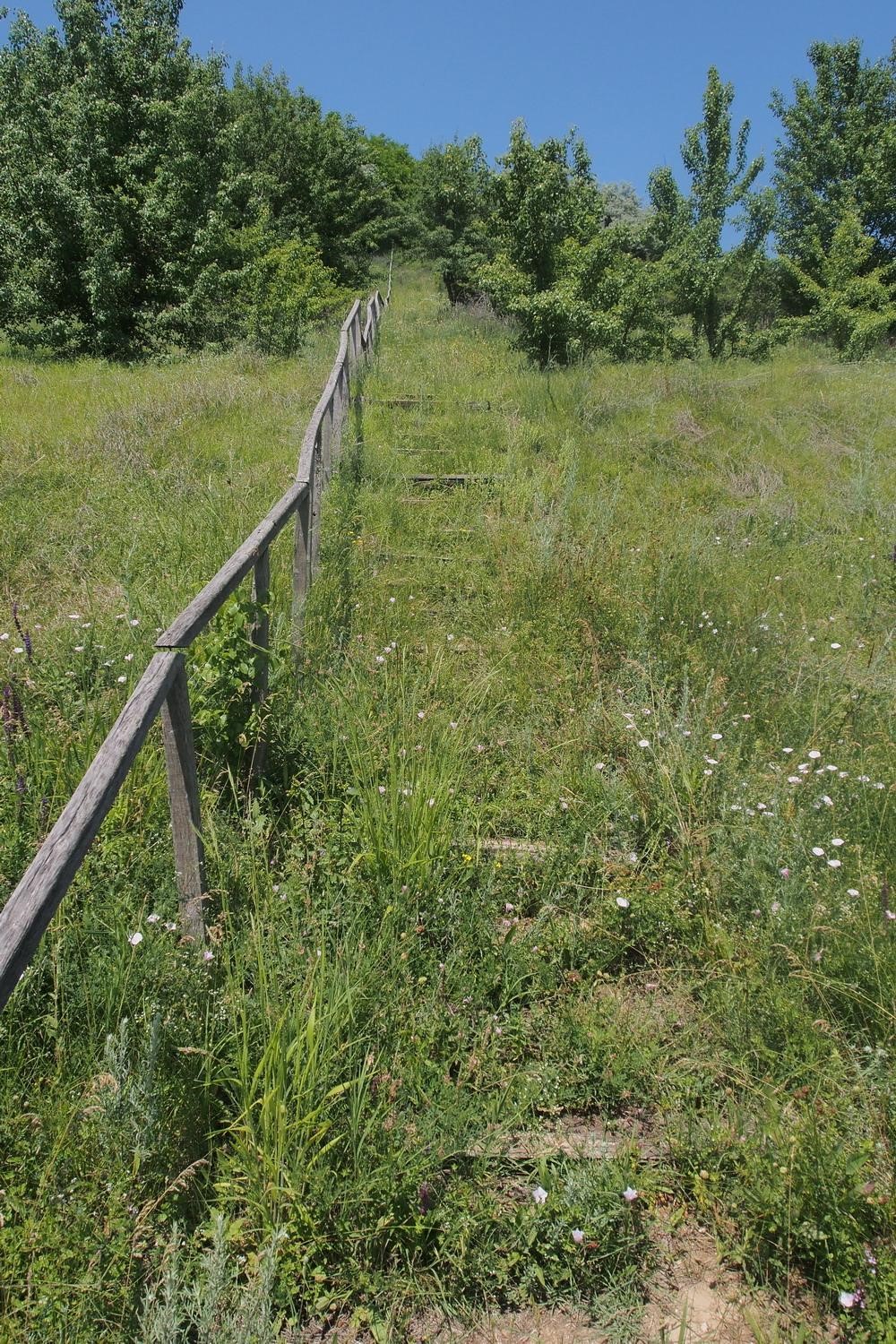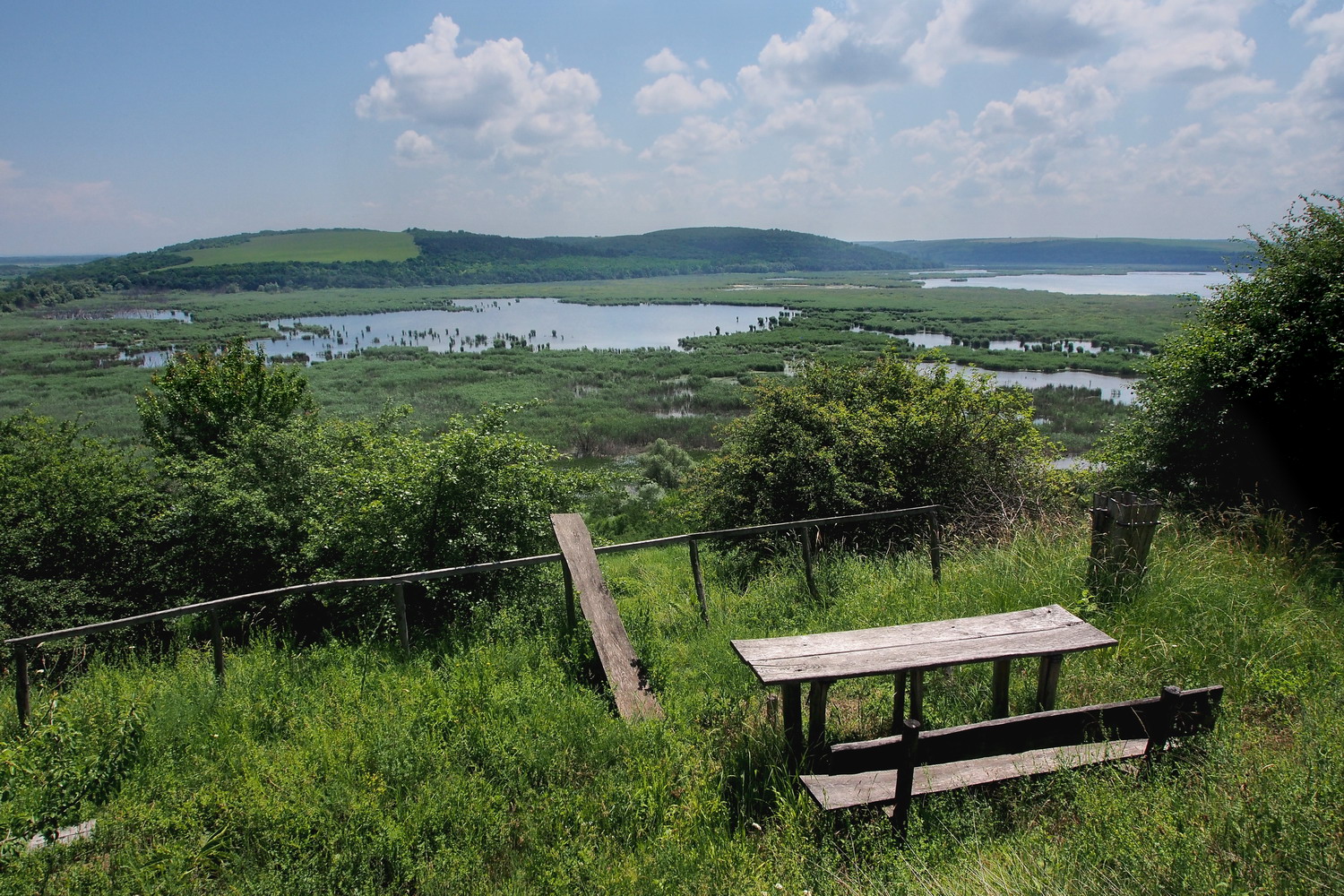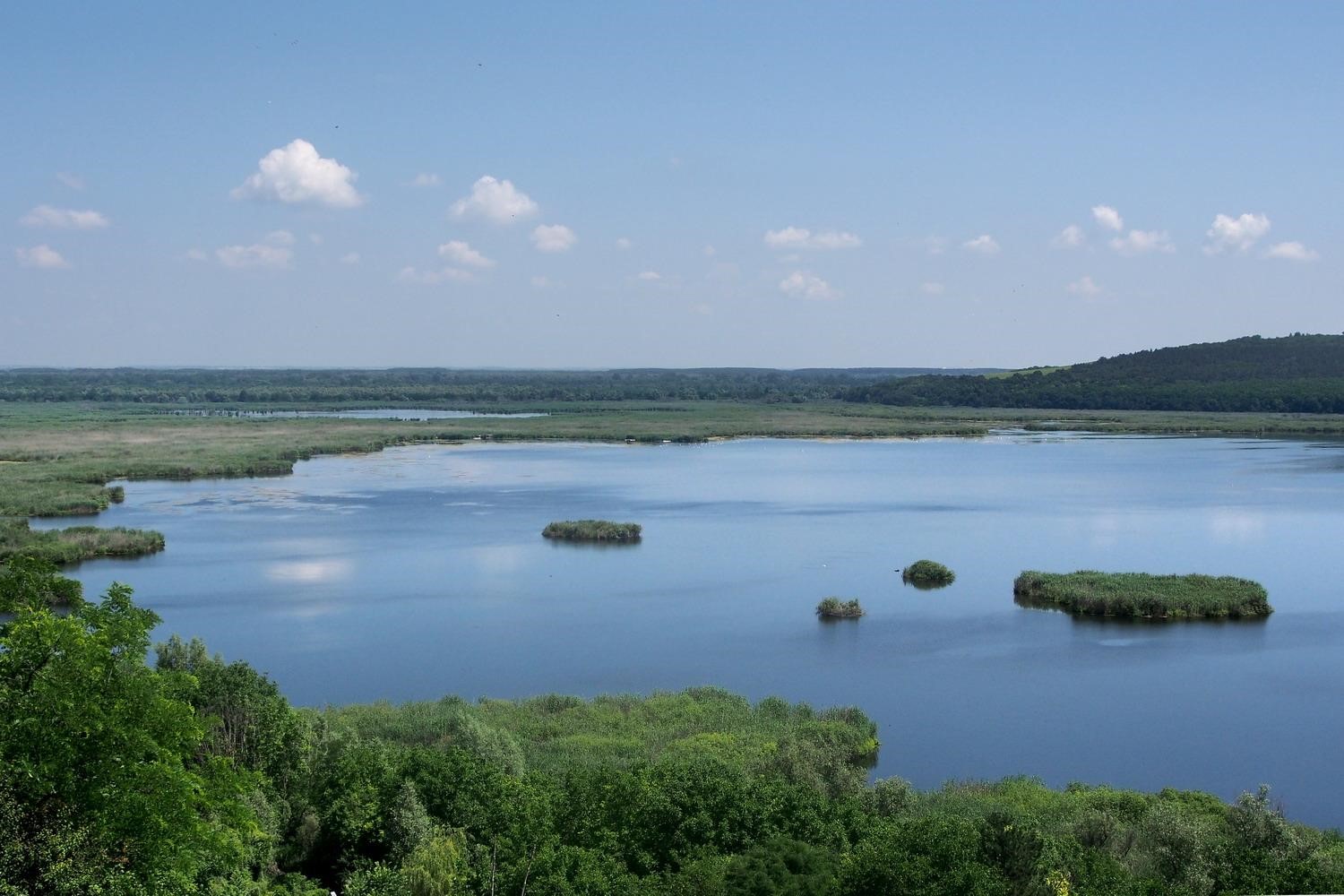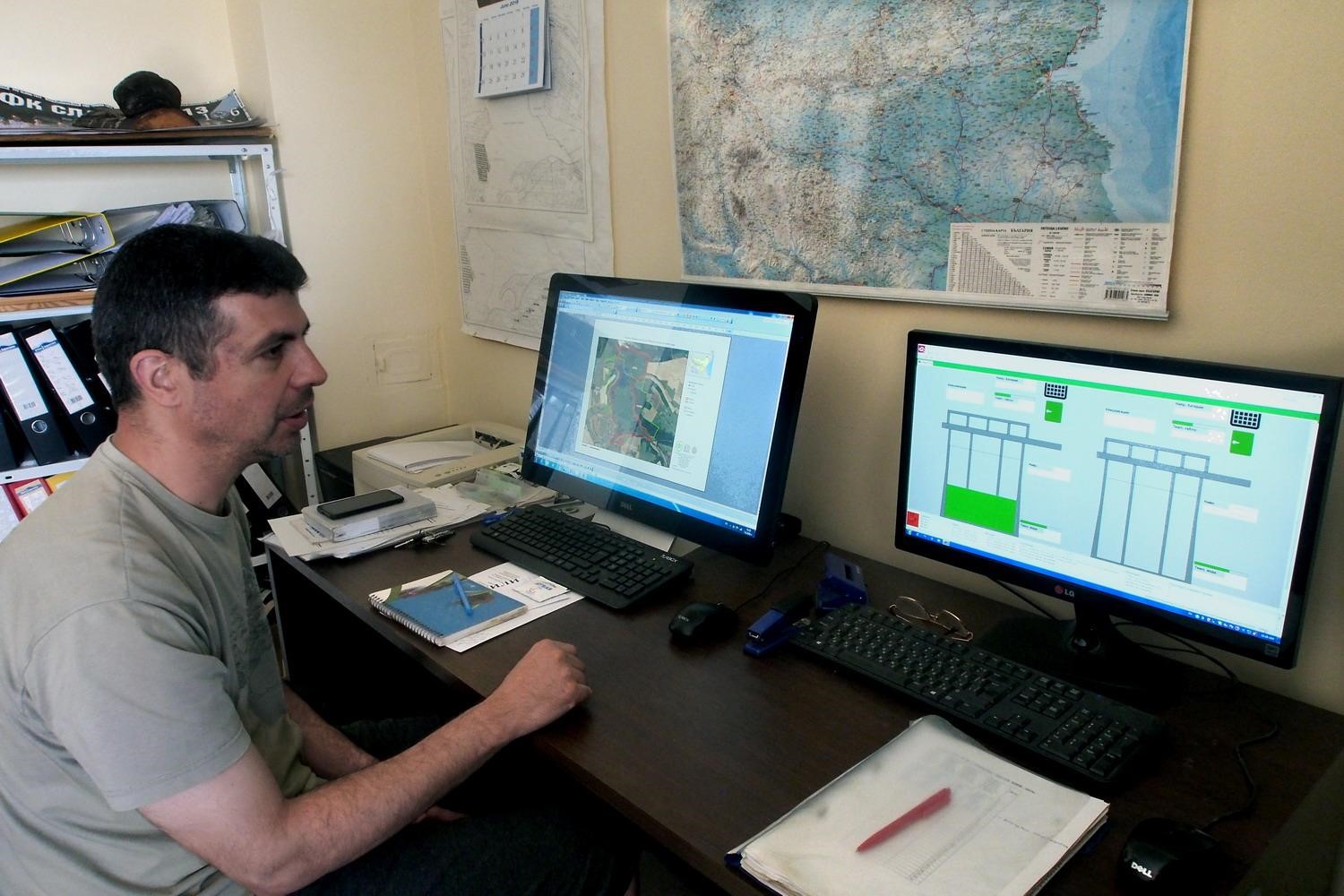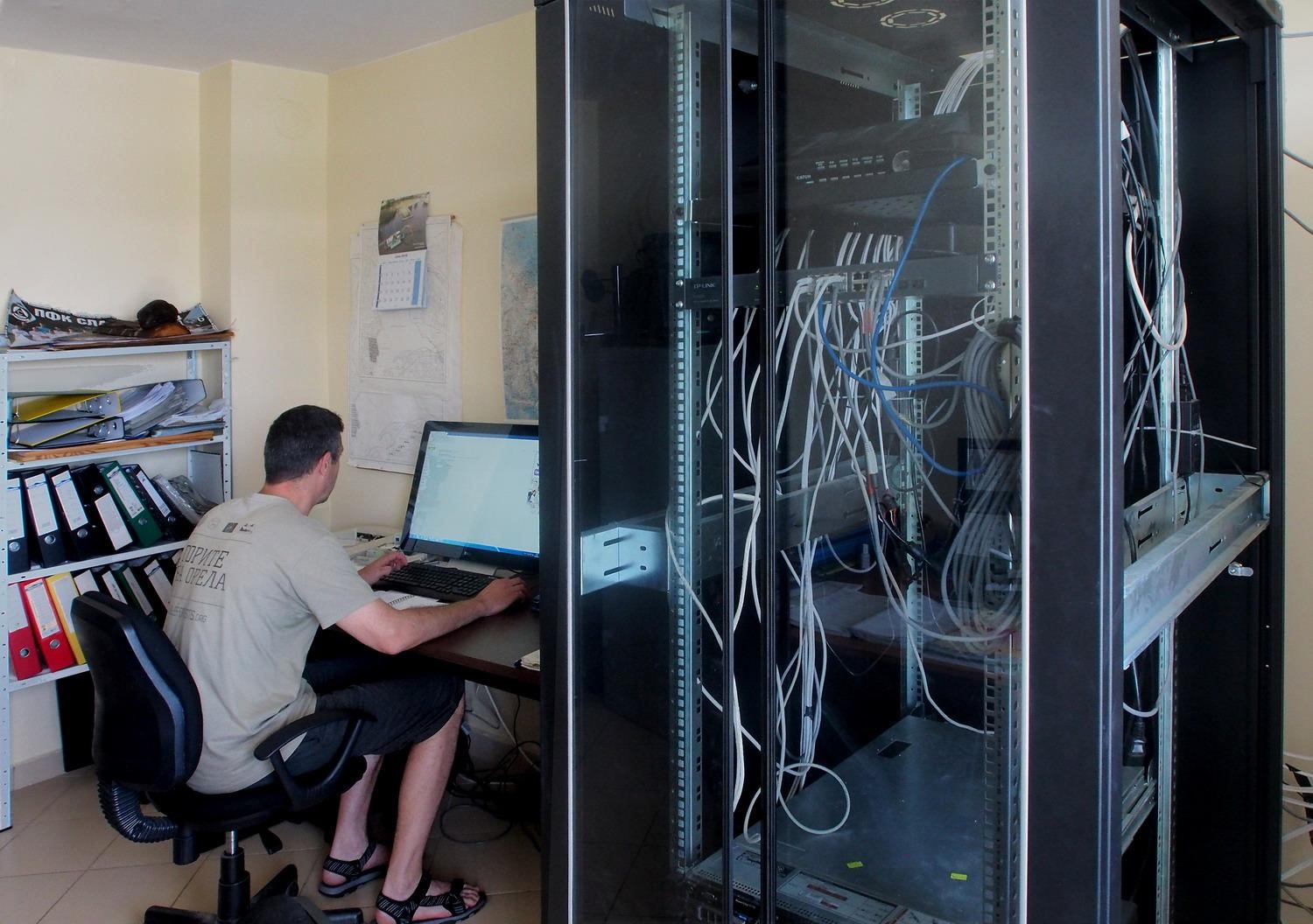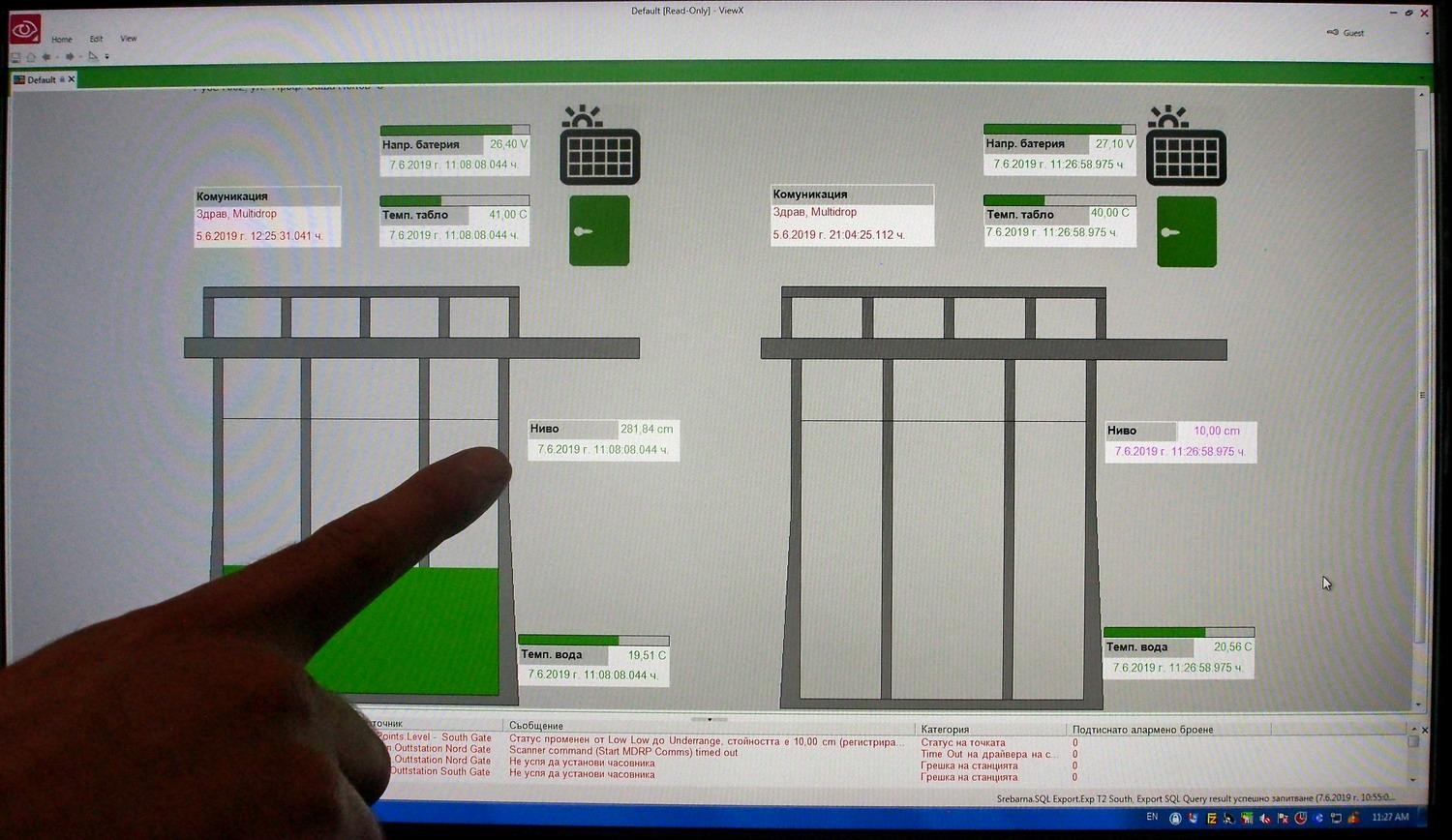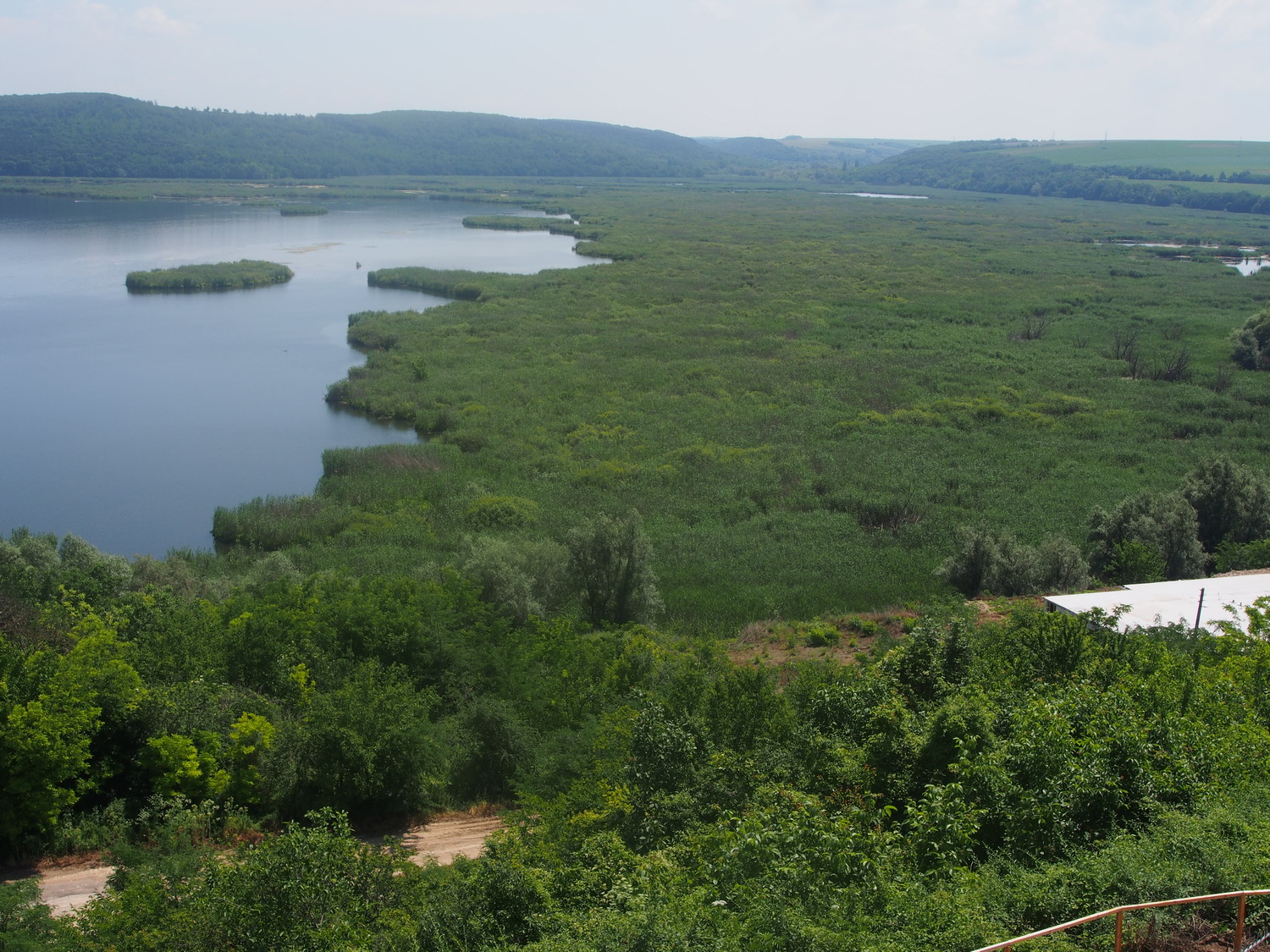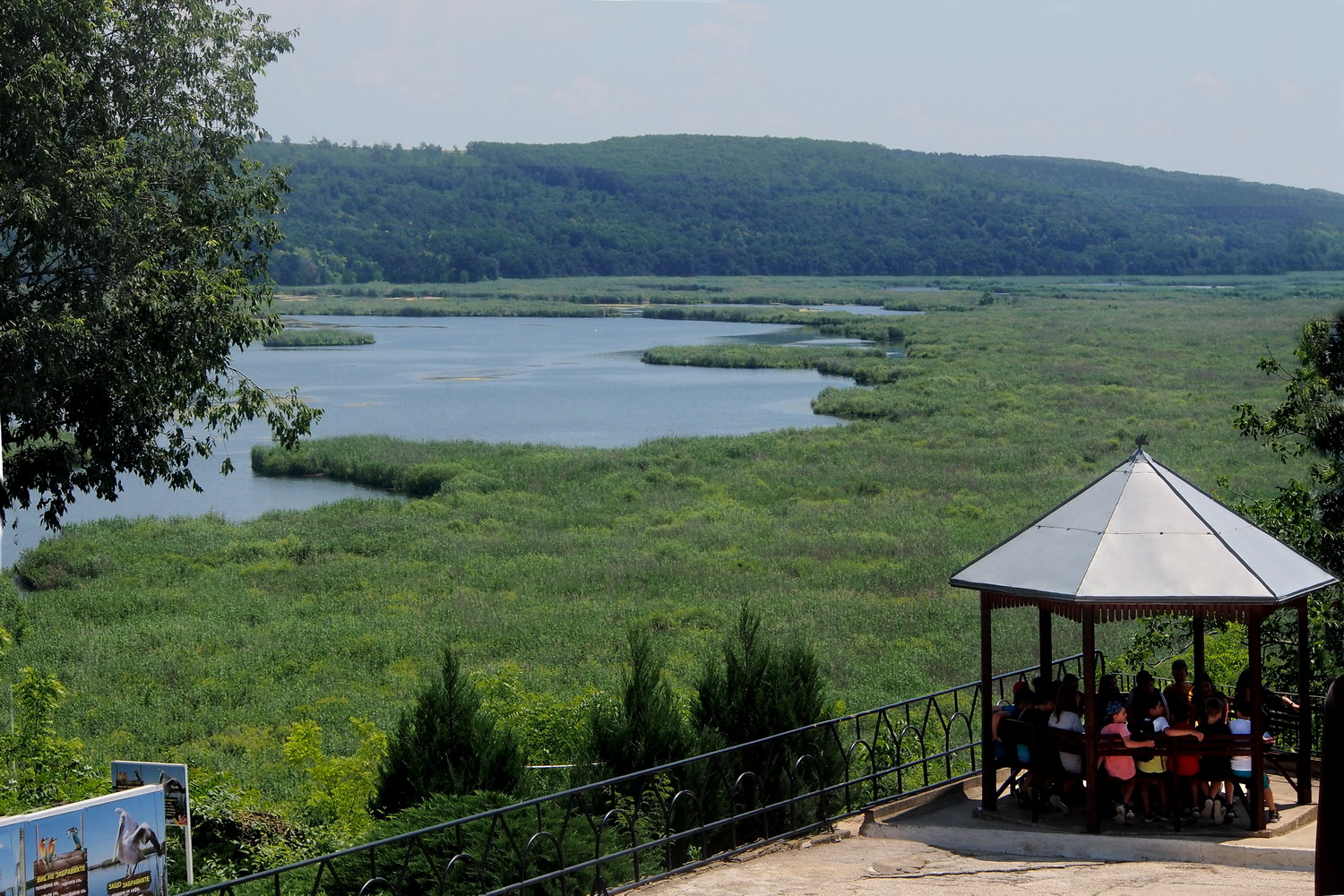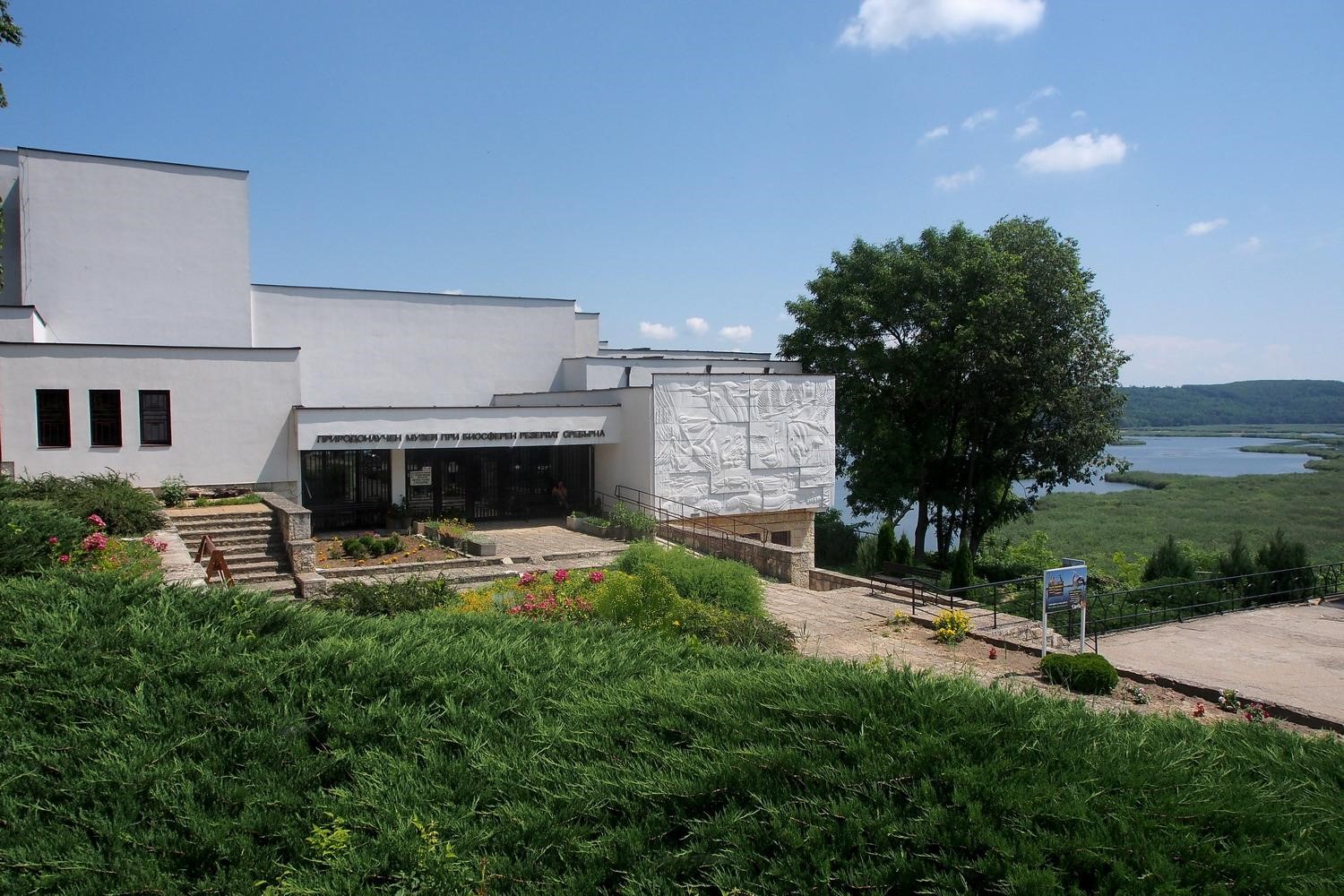DANUBEparksCONNECTED Bridging the Danube Protected Areas towards a Danube Habitat Corridor
Cycling the Danube in Bulgaria
|
||||||||
The Protected Area Kalimok-Braslen is the largest protected area in Bulgaria, covering 5,770 hectares between Babovo and Tutrakan and including eight islands. It might be as well the most valuable natural treasure in Bulgaria, but surely sits on top 10 list of the country’s most representative areas. The most valuable assets of the Kalimok-Braslen PA are birds, specially pelicans, cormorants and herons. There are 240 bird species (130 nesting here).
Towards Braslen… Riding the dam in the Protected Area.
I passed a nice part of the PA while riding the lonely Danube dam from Ryahovo to Barshlen. And I was told to look for the Tourist Info Center in Braslen, but it was far from what I expected: instead of an office somewhere in the village there was a nice tiny forest at the end of it, bordering the main road Ruse – Silistra. And in the middle of it I stopped in front of a large building whose architecture unmistakably pointed to the construction style of the 1970s or 1980s. But it was nicely blended with the ambiance, obviously recently renovated, and there was even a swimming pool in the pleasant garden in front of it. I was greeted there by Mr. Dimcho Petrov, the Mayor of Braslen:
But this is much more than just a plain info-center: it offers accommodation in 40 beds and is designed as a green school for primary school children. “Braslen was chosen because it is located in the Protected Area, which was proclaimed in the 1980s.”
Emilia Petkova gives details about the DANUBEparksCONNECTED
„The Directorate of Nature Park Russenski Lom was established twenty years ago”, said Emilia. “As employees of the Directorate at that time we came up with the idea of founding the Club of Friends of the Park. It allowed us to bring together enthusiasts and stakeholders of the region and to focus their efforts in order to help the Park to achieve its goals.” The Club later widened its activities to the Kalimok-Braslen PA and immediately responded to possibilities offered by the DANUBEparksCONNECTED project by joining its international team. The key reason was an effort to reintroduce black poplars in the PA. “The terrain that we work on was first a forest and then an agricultural area. We are trying now to restore the forest again there but it doesn’t go without problems and delays. Last spring there was a problem with pumping station that draws water from the fields and there was a flood there. Local farmers lost their harvest and breached their contract with the EU without their fault, while we missed spring and have a delay in our reforestation plan, as the best time to do it again will be only next year.
A view of the zone for black poplar reintroduction
The story of broken pumps is characteristic of the state bureaucracy: the state-owned company sent an info about the problem to the Ministry of Environment, but received a response saying that the repair works in the pumping station were not possible because it was located in the protected area. The protests of farmers and their visits to the Ruse did not help – the time was lost, and then it was simply too late… We anyway want to further continue with the reforestation project, but will EU assistance for that. Another activity that we are devoted to is to provide protectors (insulators) for electric poles in the area, in order to protect birds from getting killed by electric shock when hitting them. Our experience with that problem was actually our original contribution to the DANUBEparksCONNECTED project: the partners were at first unaware of this dimension and were not totally convinced that our measures were needed. But it changed after German experts were consulted and statistical data confirmed the occurrence. We have invited all experts with experience in electricity protection to a national meeting, in order to expand national awareness and knowledge of the problem. The first set of protectors, manufactured in Finland, was applied in 2014, in neighboring villages Ivanovo and Koshov. We mounted 300 pieces on 100 electric poles (three protectors per pole). And we are just about to mount next set in Kalimok. Use of protectors brings clear benefit to electricity supply operators as well, as they prevent network incidents caused when birds come in contact with conductors on the poles.” The Protected Area is also Natura 2000 zone and that dictates certain behavior: no development is allowed, everything must remain as it was. It is not possible to apply even things that would seemingly only slightly distort the local nature - a rock climbing routes for example. Well, theoretically… Do the rules of Natura 2000 specifically mention monster trucks and off-road racing machines? No? So let’s make a 30 km long racing course on the very edge of the Natura 2000 zone, in the vicinity of the village Sredna Kula and near the Danube and Ruse. And let’s have there at least one big event each year. It happened only once that the guys who had that idea (mistakenly) notified the Club and even sent a map of the event. Emilia and Milko at that time were still working in the Park’s Directorate and could rely on its authority to stop the race.
Nature conservation activities in the Natura 2000 area near the Danube and Ruse If we speak of problems, one thing to mention is groundwater. There was a World Bank project that sought to bring more water into the area by cutting the Danube embankment. It was achieved through 2-3 sub projects (which also led to the creation of the Belene-Persina Protected Area), but local farmers and hunters were not delighted to see that water levels were since then regulated by the Nature Park (like on Persina island). Other problems include initiative and lobbying to build renewable energy sources in the Danube waters, and sometimes people who seem unwilling to accept a simple fact that building houses in a Nature Park is not allowed. Others erect fences around their properties to protect them from deer, which is also strictly prohibited in Nature Parks. „In the past, the Nature Parks in Bulgaria were connected into a strong "family" with good internal cooperation. But some five years ago, big investors set out on all types of eco-organizations who were a hindrance to their ambitions, labeling their network as „Green Octopus“. By The campaign in the media was strong and promoted the image of NGOs as hotbeds of corruption. It is therefore quite difficult now to work in the environmental field as we are seen as the "bed guys". But we trust in the EU, which recognizes causes and consequences and constantly pressures our Government to do their job. It is like ‘you said you would do this, and you promised that you will do that - what's going on with this, and what is going on with… that?’ :)" Back to the DANUBEparksCONNECTED: Emilia says that the project activities gave her chance to visit Hainburg and Haus am Strom. She would like to see Visitors Center of the National Park Donau-Auen, as there is an ambition to have here something like that here. I then spend more time with Dimcho Petrov, an interesting person itself. He left his carrier in Ruse as a TV personality and an author of documentary films (I would recommend “Rock monasteries of Bulgaria”) in order to become Mayor of Braslen, just like his great-grandfather Lazar who was on the same duty in 1911.
Mr. Dimcho Petrov, Mayor of Braslen “The main problem we have here is that the wetlands along the river are owned by a state-owned irrigation company. The municipality of Slivo Polje has 11 populated places and 27 km of Danube coast, and we want to develop river and fishing tourism in order to attract guests. But we do not have any influence to the state, appearance and contents on the Danube bank. The infrastructure is a major problem: a good quality road along the embankment is the basis for the development of these two types of tourism. Another example of an unbelievable state of affairs is this: a protected area means (among other things) that forestry works, drainage and disturbance of the water regime, conversion of meadows and pastures into arable land - are all prohibited. But there is heavy machinery of a private firm that is working right now in the floodplain, destroying the paved embankment road and leaving behind in the floodplain tracks that are sometimes deep up to the waist. This happens because it is possible for private companies to lease the area from the state and then to exploit the timber there.”
Aggressive forestry in the Kalimok–Braslen Protected Area But while waiting for changes in the bureaucratic labyrinth Dimcho doesn’t loose enthusiasm for Tourism development, especially the organized type of tourism: “Since 2016 we regularly have scouts from the cities of Ruse, Varna, Pleven and Schumen. Last year we even had a group from Belgium, in a camp organized in front of the Center (only their doctors stayed in the accommodation). They came here on invitation of our domestic guests - scouts who were satisfied with their previous experience here.
Barshlen camp activities
Camping in the front of Tourist info Centre Our typical camp lasts 10 days and during that time the participants go to the Danube on kayak tours, learn survival skills in nature and get acquainted with the nature of the region, its birds, plants and fish. Groups have 40-100 people and come in June and July. We have another a tourist event in August: a one-day (it happens on Saturdays) Fish Festival that attracts as much as 1000 visitors from Bulgaria, Romania, Czech Republic, Croatia. There are competitions for the best fish stew, baked fish and home-made brandy, as well as for the fastest cleaning of fish (last year's winner was Vendo Milde – a Czech from Ruse, descendant of an old brewery that came from the Czech Republic and founded the brewing industry in Bulgaria.) As of 2018 we also have art colonies and one of them deals specifically with graphics - the authors were from Bulgaria and Romania. Theme is appropriate: nature, and works remain in our village gallery at the Center. Off course, cyclo tourists can also camp here or use the accommodation in the Center. We also plan to offer ten rental bikes in the village.” As Dimcho explained to me, to the east of the village (in the direction of Nova Černa) there are abandoned fish-ponds. But after opening the embankment in three places during before mentioned projects in 2007-2009, the ponds are again in use as they fill up when the water in the Danube is high. (When the Danube level is low, the sluices get closed.) The fish are breed and then released into the Danube. “Tutrakan is a tiny but famous fishing town. But before and after WW II they obtained most of the fish from wetland - this was just raised to an industrial level after WW II. Production, however, stopped in the late 1980s and early 1990s. (Bulgaria previously also had large vessels for sea fishing - they are all gone because somehow the need for fish has decreased.)
A sunset in the Kalimok-Braslen style
|
||||
|
||||||||

